(U.S. Grains Council) The U.S. Grains Council’s (USGC’s) Southeast Asia and Oceania (SEA&O) team recently participated in two leading bioenergy conferences in the region, underscoring the pertinent role ethanol can play in emerging new-use areas for transportation decarbonization and how the
U.S. Ethanol and SAF Industry Leaders Seek to Intervene in Legal Challenge to EU Sustainable Aviation Fuel Regulation
(Renewable Fuels Association) Leaders of the U.S. ethanol industry are seeking to intervene in a legal challenge of the ReFuelEU Aviation Regulation, which effectively bans the use of renewable, crop-based biofuels like corn ethanol as a feedstock for decarbonizing the aviation sector. Collaborating in the intervention are the Renewable Fuels Association, U.S. Grains Council, Growth Energy and LanzaJet. Earlier this year, LanzaJet opened the world’s first ethanol-to-jet biorefinery, in Georgia.
The application to intervene in the proceedings supports a challenge brought by ePURE, a trade association representing European ethanol producers, and Pannonia Bio, one of Europe’s largest ethanol producers. Their application seeks to annul the relevant provisions of the ReFuelEU Aviation Regulation, which was adopted by the EU in 2023 and is set to take effect in 2025. A similar challenge was brought against the FuelEU Maritime Regulation, and RFA is seeking to intervene there, as well.
With regard to the new petition, the groups argue it will have a detrimental effect on the U.S. ethanol industry.
“[T]he Contested Provisions give rise to a de facto ban on the supply of crop-based biofuels to the aviation sector in the EU,” the organizations argue. “Due to the substantial difference in cost between biofuels and fossil fuels in the EU – which the Regulation expressly acknowledged – aviation fuel suppliers will not purchase biofuels instead of fossil fuels unless they are obliged or incentivised to do so. Since using crop-based biofuels will not help aviation fuel suppliers meet their obligations under the Regulation, they will not purchase those biofuels.” READ MORE
Related articles
- US biofuel groups challenge EU SAF regulation (Argus Media)
- Ethanol Blog: US Ag, Biofuels Interests to Intervene in EU Lawsuit Challenging SAF Regulation (DTN Progressive Farmer)
- US Ethanol Industry Seeks to Challenge EU SAF Regulation (Enegy.AgWired.com)
- EUROPEAN UNION ATTEMPTING TO BAN CROP-BASED BIOFUELS AS SAF FEEDSTOCK (Brownfield Ag News)
Excerpt from Brownfield Ag News: “On its face you’d look at that and say ‘boy that’s great, that could really be an opportunity for ethanol producers in Europe and here in the U.S. as well.’ But the problem is, within that regulation the European Commission is also explicitly banning the use of any crop-based biofuel.”
He (Renewable Fuels Association CEO Geoff Cooper) says that’s inconsistent with other EU transportation regulations that recognize the carbon benefits of biofuels like ethanol.
“We really scratch our heads when we look at the fact that the Europeans are saying on one hand ‘crop-based biofuels are great for on-road use, but we’re not going to allow them in aviation.’ And we think there’s just a real, a real problem with that. And that’s why we’re taking that program on.” READ MORE
RFA Welcomes 40B Sustainable Aviation Fuel Guidance, But Says Additional Work Needed
(Renewable Fuels Association) The 40B tax credit guidance and modified GREET model released today by U.S. Treasury begin to unlock the door for U.S. ethanol producers and farmers to participate in the emerging market for sustainable aviation fuels (SAF). However, more work must be done to fully open the SAF market to ethanol and properly recognize the climate benefits of modern agriculture and biofuels, according to the Renewable Fuels Association.
“Today’s guidance and modified GREET model help position ethanol-based SAF for takeoff, but more work is needed to fully clear the runway and get this opportunity off the ground,” said RFA President and CEO Geoff Cooper. “We are encouraged that, for the first time ever, this carbon scoring framework will recognize and credit certain climate-smart agricultural practices. We’re also pleased to see the integration of other carbon reduction strategies—like renewable process energy and carbon capture and sequestration—into the model. However, RFA believes less prescription on ag practices, more flexibility, and additional low-carbon technologies and practices should be added to the modeling framework to better reflect the innovation occurring throughout the supply chain.”
Cooper noted that today’s 40B package sets the stage for a more expansive and flexible modeling approach under the 45Z clean fuel production tax credit. RFA expects the Biden administration will soon request public comment on considerations and options for implementing the 45Z credit.
“We view today’s 40B announcement as the starting point—not the ending point—for additional modeling improvements, further integration of individual climate-smart agriculture practices, and emerging biorefinery technologies,” Cooper said. “45Z is where the rubber really meets the road. We look forward to working with USDA and other agencies across the administration to ensure 45Z is implemented in a way that truly swings the door wide open for farmers and ethanol producers to participate in the enormous decarbonization opportunity.”
The conversion of ethanol to jet fuel is one of the most promising forms of SAF, Cooper said. Low-carbon ethanol has key advantages as a feedstock for SAF, as it is cost-competitive with petroleum-based fuels, has established production and transportation infrastructure, and is by far the largest-volume biofuel produced in the United States, with output of nearly 16 billion gallons per year.
“We are especially grateful for the role that U.S. Agriculture Sec. Tom Vilsack and his team played in the effort,” Cooper concluded. “Sec. Vilsack has time and again demonstrated his commitment to serving rural communities, and understands the importance of lower-carbon, American-made renewable fuels.”
A History of Action
RFA has worked diligently with lawmakers and others over the past several years to ensure ethanol can participate in SAF opportunities. RFA’s efforts on the SAF tax credit began long before the Inflation Reduction Act was introduced, including correspondence with congressional tax-writing committees in August 2021 and a joint industry letter in April 2022. More recently:
- In February 2023, RFA filed extensive comments urging the allowance of GREET modeling for the sake of the SAF tax credits. In June and July, the organization welcomed the introduction of the Sustainable Aviation Fuels Accuracy Act in both houses of Congress.
- In August, at the RealClear Energy website, Cooper wrote about how farmers and ethanol producers can put “the S in SAF.” And in an August blog post, he pointed out how the SAF modeling debate isn’t really about GREET vs. ICAO, but about “current data vs. old data.” Click here for a chart RFA has developed to explain the key differences between the DOE GREET approach and the ICAO approach.
- In November, many RFA member companies signed on to a historic coalition letter that included major airlines, calling on the Biden administration to integrate the best available science and data regarding the carbon impacts of SAF into the tax credit program.
- RFA also endorsed the Farm to Fly Act in November, which would affirm a common definition of SAF for USDA purposes, as widely supported by industry and congressional leaders to enable U.S. crops to most effectively contribute to aviation renewable fuels via renewable fuels like ethanol. A Senate version was introduced in January.
- In January, RFA offered specific recommendations for ensuring that the best available science and data are used in determining eligibility for the SAF tax credit established in the Inflation Reduction Act.
- In February, a bipartisan group of 43 lawmakers in both houses of Congress sent a letter to the Interagency Working Group, asking it to meet the March 1 deadline for updates to the GREET model and ensure the updates are based on sound science, current data, and methodologies that properly recognize modern practices in agriculture and biofuel production.
- When the March 1 deadline passed, RFA called on the working group to move quickly, noting that it was important to get the modeling right. Later that month, RFA was part of a coalition of biofuel and farm advocates that called on the Treasury Department to swiftly resolve any questions standing in the way of efforts to scale up U.S. production of sustainable aviation fuel.
- Just last week—on April 24—RFA was part of another major coalition that called on agriculture committee leaders in Congress to boost the role of American farms in fueling low-carbon aviation by including meaningful SAF provisions, such as the Farm to Fly Act, into the farm bill.
- Finally, RFA is a founding member of the SAF Coalition, which launched Monday to accelerate the development and deployment of sustainable aviation fuel in the United States. READ MORE
Related articles
- U.S. Department of the Treasury, IRS Release Guidance to Drive American Innovation, Cut Aviation Sector Emissions (U.S. Treasury Department)
- Sustainable Aviation Fuel Credit; Lifecycle Greenhouse Gas Emissions Reduction Percentage and Certification of Requirements Related to the Clean Air Act; Climate Smart Agriculture; Safe Harbors (U.S. Treasury Department/Internal Revenue Service)
- Growth Energy: New 40B Guidance an Important First Step (Growth Energy)
- Treasury Releases Guidance for SAF Credit (Energy.AgWired.com)
- Treasury releases Sustainable Aviation Fuel tax guidance (The Fence Post)
- Treasury Announces Updated SAF Tax Credit Guidance, Release Of 40SAF-GREET 20024 Model (Ethanol Producer Magazine)
- Semi-Sweet on GREET Street: Administration decision on SAF tax credits is bold for residues; tepid for grains, oilseeds (Biofuels Digest)
- Clean Fuels Welcomes §40B SAF GREET Model (Clean Fuels Alliance America)
- Biden administration details how producers of sustainable aviation fuel will get tax credits (Associated Press)
- Corn to Power Airplanes? Biden Administration Sets a High Bar.: Producers of biofuels like ethanol, which could help create a new generation of jet fuel, would have to overhaul their practices to receive tax credits. (New York Times)
- US Treasury updates SAF tax credit guidelines (Argus Media)
- Biden administration charts new path for use of biofuels in aviation: It is central to the administration’s efforts to cut emissions from the difficult-to-decarbonize aviation sector. (Politico Pro)
- Biden team sets out path for ethanol aviation fuel subsidies (Reuters)
- Iowa farmers' conservation practices to be a factor in renewable aviation fuel tax credits (Des Moines Register)
- Ag feedstocks gain toehold in SAF tax policy, but uncertainty lingers (Agri-Pulse)
- VILSACK SAYS AGRICULTURE IS IN THE GAME WHEN IT COMES TO SUSTAINABLE AVIATION FUEL (Brownfield Ag News)
- ‘Climate-Smart’ Corn-Based SAF Rules Defined (AvWeb)
- Biden administration unveils updated SAF tax credit model, provides ethanol clarity (S&P Global)
- Treasury Announces Updated SAF Tax Credit Guidance, Release Of 40SAF-GREET 2024 Model (Ethanol Producer Magazine)
- Some Groups Pan SAF Rules for Farmers: Groups Criticize Cover Crop Requirement for Sustainable Aviation Fuel Modeling (DTN Progressive Farmer)
- Turbulence ahead? Biden Admin’s sustainable aviation fuel tax credits carry strict rules for farmers (Michigan Farm News)
- Farmer Consultant Digs Into SAF Tax Credit Guidance (AgNewsWire; includes AUDIO)
- Grassley, Brown criticize GREET rewrite as groups express mixed reactions (Fence Post)
- FISCHER SAYS NEW MODELING INCENTIVIZES IMPORTS (Brownfield Ag News)
- A US push to use ethanol as aviation fuel raises major climate concerns -- Ethanol makers who use sustainably produced corn can now qualify for big federal tax credits, but critics are skeptical of the carbon benefits. (MIT Technology Review)
- The New GREET Model is Finally Here: An In-Depth Look at What it Means for Farmers (AgWeb; includes VIDEO)
- SAF IRS Guidance Released - Is it Worthless? (AgWeb Opinion)
- Ethanol Report 5-2-24 40B SAF Tax Credit Guidance and Beyond (Energy.AgWired.com; includes AUDIO podcast)
- Time short as airlines pitch fuel tax credit extension: Airline executives say a sustainable aviation fuel credit sunset provision would have consequences for climate goals. (Politico Pro E&E Daily)
- CORN GROUPS TAKE ISSUE WITH SUSTAINABLE AVIATION FUEL REQUIREMENTS (Brownfield Ag News)
- Making Flying Cleaner: New guidelines attempt to make the aviation cleaner by relying on corn-based ethanol, but experts divided on the fuel’s environmental benefits. (New York Times)
- Treasury Department finalizes guidance for SAF tax credits (Travel Weekly)
- 7 Key Takeaways From The 40B SAF GREET Model Update (Continuum Ag; includes VIDEO)
- Biden aviation fuel plan sinks hopes for ethanol: The Treasury Department's guidance for an aviation fuel tax credit was a mixed bag for biofuels, with corn-based ethanol falling short of climate-smart goals. (Politico Pro Greenwire)
- More Clarity Urged for GREET/SAF (AgWeb)
- KNOWING CARBON INTENSITY SCORE IS FARMER’S FIRST STEP TO SAF MARKET (Brownfield Ag News)
- Farmers blast cover crop requirements for sustainable jet fuel tax credits -- Corn and soybean growers say the rules will limit access to the lucrative SAF market as some climate-smart production practices are too expensive or not feasible for farms to implement. (Agriculture Dive)
- Vilsack Explains SAF Tax Credit for Farm Broadcasters (AgWired; includes AUDIO)
- Corporations buy into sustainable fuel certificates to address air travel emissions (GreenBiz)
- FARMERS, AIRLINES FOCUS ON THE FUTURE OF SUSTAINABLE AVIATION FUEL (Brownfield Ag News)
- Breaking Down 40BSAF-GREET: A Conversation With Geoff Cooper, CEO Of RFA (Ethanol Producer Magazine podcast)
Excerpts from U.S. Treasury Department: Biden-Harris Administration Partners Announce Updated GREET Model to Measure Lifecycle Emissions from Sustainable Aviation Fuels
WASHINGTON – Today the U.S. Department of the Treasury and Internal Revenue Service (IRS) released guidance on the Sustainable Aviation Fuel (SAF) Credit established by the Inflation Reduction Act (IRA), part of President Biden’s Investing in America agenda to create good-paying jobs and reduce climate pollution by spurring innovation in the aviation industry.
The Treasury Department worked closely with Biden-Harris Administration partners, including the Environmental Protection Agency (EPA), Department of Transportation (DOT), Department of Agriculture (USDA), and Department of Energy (DOE) on today’s Notice.
“President Biden’s Inflation Reduction Act is driving American innovation to create good-paying jobs and help the U.S. clear hurdles in our clean energy transition,” said U.S. Secretary of the Treasury Janet L. Yellen. “Incentives in the law are helping to scale production of low-carbon fuels and cut emissions from the aviation sector, one of the most difficult-to-transition sectors of our economy. Today’s guidance provides additional clarity and certainty to companies and producers.”
“Sustainable aviation fuel is a key part of the Biden-Harris Administration's efforts to transition the American economy to a clean energy future and rebuild the middle class from the bottom up to the middle out in rural America,” said U.S. Secretary of Agriculture Tom Vilsack. “Today’s announcement is an important stepping stone as it acknowledges the important role farmers can play in lowering greenhouse gas emissions and begins to reward them through that contribution in the production of new fuels. This is a great beginning as we develop new markets for sustainable aviation fuel that use home grown agricultural crops produced using climate smart agricultural practices. USDA will continue to work with our federal agency partners to expand opportunities in the future for climate smart agriculture in producing sustainable aviation fuel.”
“The guidance released today reflects the latest data and science needed to help create new economic opportunities for America's agricultural sector,” said U.S. Secretary of Energy Jennifer M. Granholm. “This interagency effort will help our climate goals take flight with cheaper, cleaner sustainable aviation fuel -- ensuring America maintains an innovative edge on the global clean technology stage.”
“Innovation in the aviation sector has brought our country and our world together and now, it’s fueling the solution to meet our ambitious net-zero carbon emission goals,” said U.S. Secretary of Transportation Pete Buttigieg. “Today’s announcement will strengthen America’s position as a leader in the production of sustainable aviation fuels, help cut carbon emissions, and create a better future for all Americans.”
“The Inflation Reduction Act’s tax credit for sustainable aviation fuels is a critical tool for decarbonizing air travel,” said John Podesta, Senior Advisor to the President for International Climate Policy. “Today’s announcement of an updated GREET model and Treasury guidance is a big step forward for American farmers, for American innovation, for American jobs, and for America’s ability to cut carbon pollution from our transportation sector and protect our planet.”
The Treasury Department’s guidance provides important clarity around eligibility for the SAF Credit. The credit incentivizes the production of SAF that achieves a lifecycle greenhouse gas emissions reduction of at least 50% as compared with petroleum-based jet fuel. Producers of SAF are eligible for a tax credit of $1.25 to $1.75 per gallon. SAF that achieves a GHG emissions reduction of 50% is eligible for the $1.25 credit per gallon amount, and SAF that achieves a GHG emissions reduction of more than 50% is eligible for an additional $0.01 per gallon for each percentage point the reduction exceeds 50%, up to $0.50 per gallon.
As part of today’s guidance, the agencies comprising the SAF Interagency Working Group (IWG) are jointly announcing the 40B SAF-GREET 2024 model. This model provides another methodology for SAF producers to determine the lifecycle GHG emissions rates of their production for the purposes of the SAF Credit.
The modified version of GREET incorporates new data, including updated modeling of key feedstocks and processes used in aviation fuel and indirect emissions. The modified GREET model also integrates key greenhouse gas emission reduction strategies such as carbon capture and storage, renewable natural gas, and renewable electricity.
The Notice released today also, on a pilot basis, incorporates a USDA pilot program to encourage the use of certain Climate Smart Agriculture (CSA) practices for SAF feedstocks. Incorporating CSA practices into the production of SAF provides multiple benefits, including lower overall GHG emissions associated with SAF production and increased adoption of farming practices that are associated with other environmental benefits, such as improved water quality and soil health.
For corn ethanol-to-jet, the pilot provides a greenhouse gas reduction credit if a “bundle” of certain CSA practices (no-till, cover crop, and enhanced efficiency fertilizer) are used. It similarly would allow a greenhouse gas reduction credit for soybean-to-jet if the soybean feedstock is produced using a “bundle” of applicable CSA practices (no-till and cover crop). This is a pilot program specific to the 40B credit, which is in effect for 2023 and 2024.
To credit CSA practices in the Clean Fuel Production Credit (45Z), which becomes available in 2025, the agencies will do further work on modeling, data, and assumptions, as well as verification. A new 45Z-GREET will be developed for use with the 45Z tax credit. READ MORE
Excerpt from The Fence Post: The National Oilseed Processors Association President and CEO Kailee Tkacz Buller had a mixed reaction.
“Acknowledging, for the first time, the carbon benefits that climate-smart agriculture practices can deliver is a significant step to ramping up SAF production and NOPA is pleased to see the updated GREET model recognize the positive environmental impact of U.S.-produced biofuels.
“However, we are concerned the requirement to implement climate-smart ag practices simultaneously will limit this opportunity, particularly in parts of the country where it may not be possible to plant a cover crop or the cost to implement new practices is too steep.
“We look forward to further reviewing today’s announcement and having a continued dialogue with the administration to better understand what this and other provisions, including indirect land use change impact, mean for the industry and how we can competitively and efficiently meet the needs of the SAF market,” Tkacz Buller said.
But Rep. Angie Craig, D-Minn., who is in a competitive race for re-election, said, she wasn’t satisfied with the guidance. “The new and emerging SAF market offers tremendous growth opportunities for Minnesota’s farmers and biofuel producers, including the ones in my district — farmers the administration has committed to supporting,” Craig said. “Today’s guidelines do the opposite — in fact, this announcement will significantly hinder farmers and producers’ ability to participate in the SAF market.”
“These guidelines fail to support the Minnesota farmers I represent, and they stifle the emerging SAF industry that creates a once-in-a-lifetime opportunity for airlines to meet their carbon reduction goals,” Craig said.
“I urge the Biden administration to rework these guidelines to make sure they support the ag communities that work so hard to feed and fuel our nation.”
On a call to reporters Monday that was embargoed until 4 p.m. today, John Podesta, President Biden’s senior adviser for clean energy innovation and implementation, said “aviation is hard to decarbonize,” but that it must be decarbonized.
The Treasury Department is in charge of tax regulations and the Energy Department is expected to announce an update of the GREET model.
GREET (Greenhouse gases, Regulated Emissions, and Energy use in Technologies) life-cycle analysis (LCA) is used to determine what growing conditions and production methods will have to be used for biofuels to be eligible for the credits.Agriculture Secretary Tom Vilsack said on the call that “the guidance is going to provide a clear pathway” on how to best qualify for:
▪ The 40B tax credit, a refundable blenders tax credit for each gallon of sustainable aviation fuel (SAF) sold or used after Dec. 31, 2022, and before Jan. 1, 2025, as part of a qualified fuel mixture, and
▪ The 45Z Clean Fuels Production Credit, which is designed to encourage the production of clean transportation fuels, with a focus on reducing greenhouse gas (GHG) emissions for qualifying transportation fuels produced after 2024 and sold on or before December 31, 2027.
Vilsack said the program will recognize “climate smart practices” and that farmers who use those practices won’t be audited or face penalties.
A USDA official said modeling supports the conclusion that producers will benefit from the program, but that data on how many producers will benefit is unclear. READ MORE
Excerpt from Biofuels Digest: The modified version of GREET incorporates new data, including updated modeling of key feedstocks and processes used in aviation fuel and indirect emissions. The modified GREET model also integrates key greenhouse gas emission reduction strategies such as carbon capture and storage, renewable natural gas, and renewable electricity.
The Notice, on a pilot basis, incorporates a USDA pilot program to encourage the use of certain Climate Smart Agriculture practices for SAF feedstocks. Incorporating CSA practices into the production of SAF provides multiple benefits, including lower overall GHG emissions associated with SAF production and increased adoption of farming practices that are associated with other environmental benefits, such as improved water quality and soil health. For corn ethanol-to-jet, the pilot provides a greenhouse gas reduction credit if a “bundle” of certain CSA practices (no-till, cover crop, and enhanced efficiency fertilizer) are used. It similarly would allow a greenhouse gas reduction credit for soybean-to-jet if the soybean feedstock is produced using a “bundle” of applicable CSA practices (no-till and cover crop). This is a pilot program specific to the 40B credit, which is in effect for 2023 and 2024. To credit CSA practices in the Clean Fuel Production Credit (45Z), which becomes available in 2025, the agencies will do further work on modeling, data, and assumptions, as well as verification. A new 45Z-GREET will be developed for use with the 45Z tax credit.
Reaction from industry and The Hill
Industry and farm sector reaction oscillated from weak-positive to sharp-negative.
Sen. Chuck Grassley (R-Iowa) said, “THere are two main issues with the Biden administration’s GREET Model decision: First, this new formula is going to be easy to violate. Second, without grain in the formula, there won’t be enough feedstock to make all the Sustainable Aviation Fuel environmentalists are crying for. To put it bluntly, this GREET Model update is a stupid approach. Widespread use of Sustainable Aviation Fuel will help fight global warming. But rejecting grain feedstocks will impede efforts to produce that fuel on a commercial scale.“
...
The Bottom Line
Well, you can measure the width of the window to meet the SAF Grand Challenge in micrometers, now, possibly nanometers, possibly the width of a quantum tunnel. Nevertheless, it’s progress, and good news for fans of GREET to see it finally enshrined in US tax policy. Been a long journey for GREET. Good to see it grow from a concept to an internatinoal standard of great renown. Deservedly so. READ MORE
Excerpt from Clean Fuels Alliance America: Clean Fuels urges USDA and Treasury to further update the GREET model to include additional climate smart agriculture practices specific to oilseed crops and quickly finalize rules for the 2025-2027 tax incentives (§45Z Clean Fuel Production Credit), which will support U.S. biodiesel, renewable diesel, and SAF producers.
“Clean Fuels and its members appreciate the significant work of USDA and other federal agencies to account for the role that U.S. farmers will play in decarbonizing the nation’s aviation fuel,” said Kurt Kovarik, Vice President of Federal Affairs for Clean Fuels. “U.S. farmers and SAF producers will continue to work with the agencies to rapidly expand SAF production over the next few years.”
Clean Fuels continues to assess the changes to the GREET model unveiled today, including updated indirect emission penalties for U.S. oilseed crops like soy and canola. Clean Fuels believes there is more work to be done to enable credit for climate smart agriculture practices that U.S. farmers are deploying.
“Biodiesel, renewable diesel, and SAF producers are already negotiating feedstock and fuel offtake contracts for 2025, so we look forward to working with Treasury and USDA to quickly turn attention to guidance for the Clean Fuel Production Credit that begins on January 1 next year.” Kovarik added. “We believe there are additional climate smart agriculture practices and industry data that can be incorporated in the GREET model to support the continued sustainable growth of the entire clean fuel industry.” READ MORE
Excerpt from Associated Press: Skeptics worry that a large share of the tax credits will go to ethanol and other biofuels instead of emerging cleaner fuels.
“The science matters and we are concerned this decision may have missed the mark, but we are carefully reviewing the details before reaching any final conclusions,” said Mark Brownstein, a senior vice president for the Environmental Defense Fund.
While aviation’s share of carbon emissions is small, it is growing faster than any other industry because the technology of powering planes by electricity is far behind the adoption of electric vehicles on the ground.
In 2021, President Joe Biden set a goal set a goal of reducing aviation emissions 20% by 2030 as a step toward “net-zero emissions” by 2050. Those targets are seen as highly ambitious — and maybe unrealistic.
Major airlines have invested in SAF, and its use has grown rapidly in the last few years. Still, it accounted for just 15.8 million gallons in 2022 — or less than 0.1% of all the fuel burned by major U.S. airlines. The White House wants production of 3 billion gallons a year by 2030. READ MORE
Excerpt from New York Times: President Biden’s 2022 Inflation Reduction Act offered federal tax credits for sustainable aviation fuels, industry jargon for jet fuel made without fossil fuels, that cut greenhouse gas emissions by at least 50 percent. For months now, federal officials have been evaluating research to decide how to measure whether various biofuel-based alternatives meet that standard.
Sustainable aviation fuel is already occasionally blended into traditional jet fuel, albeit at small, single-digit percentages. That scale is well below the government’s target of 3 billion gallons per year by 2030. Currently, most of it is made out of used cooking oil, and it costs two to four times as much as jet fuel.
...
Biden Administration officials introduced a new pilot program for corn ethanol to be used as jet fuel that could qualify for tax credits if certain climate-friendly farming practices were used in combination. They include no-till farming, which minimizes erosion, and covering the soil with crops that leave behind organic matter in the dirt. The program sets out similar guidelines for soy.
The new formula for claiming the tax credits — which spans 40 pages, is highly technical and must still be finalized — would also consider whether producers use carbon capture and storage, low-emissions natural gas, and renewable electricity in their processes.
...
The powerful corn and ethanol industries had been watching the Biden administration’s announcement closely to understand just how much corn farmers and ethanol producers would have to adapt, and how much detailed record-keeping would be required, to take advantage of the tax credits.
...
“We of course understand there will be a level of stringency needed,” said Geoff Cooper, president of the Renewable Fuels Association, a leading ethanol lobby group. “It’s a balancing act. And there is no way the U.S. produces 3 billion gallons by 2030 unless corn ethanol is part of that picture.”
While the United States has set ambitious targets for production, building a supply chain will take years. Not one large-scale sustainable aviation fuel plant exists in the United States yet. The Biden administration’s stated goal is to grow production rapidly so it can satisfy all domestic jet fuel demand by 2050.
Europe is at least slightly ahead. The European Union is set to introduce a blending mandate requiring airports to supply jet fuel at 2 percent blends from 2025.
Ethanol producers are looking for a new outlet for their product as electric-vehicle usage cuts into gasoline demand. And with national elections in the United States set for November, politicians can benefit from broadening incentives that are politically popular in Corn Belt states.
On Monday, major airlines including American, Alaska, Hawaiian, JetBlue and United announced a partnership with dozens of other organizations including agricultural enterprises, aircraft makers, airports, labor unions and biofuel producers that aims to scale up sustainable aviation fuel production. The group “believes in the importance of ethanol as a tool to help our industry decarbonize,” said Lauren Riley, the chief sustainability officer at United Airlines. READ MORE
Excerpt from Reuters: Bill Hohenstein, director of USDA's Office of Energy and Environmental Policy, said the administration is confident in the plan. “We do have robust data, analysis, information and modeling that all supports the conclusions that these practices do have greenhouse gas benefits," he said. READ MORE
Excerpt from Brownfield Ag News: The U.S. Secretary of Agriculture says updates to a model that measures the carbon footprint for sustainable aviation fuel should allow U.S. agriculture to participate in the sustainable aviation fuel market.
Secretary Tom Vilsack says the updated Greenhouse Gases, Regulated Emissions, and Energy Use in Technologies or GREET model might not be enough by itself to allow renewable fuel producers to qualify for a new tax credit, but using climate-smart ag practices could help. He says, “Agriculture’s foot is in the door; we’re in the game.”
“If you’re producing ethanol, you can use the GREET model, and maybe you use renewable energy, and you use climate-smart agriculture, and you do something else,” he says. “Maybe you ultimately get to less than less than 50 for your CI score, and that qualifies for the tax credit.”
...
Vilsack also says an interagency working group will continue working on another tax credit included in the Inflation Reduction Act called 45z, which supports the production of low-carbon biofuels. He says there are a few questions that need to be answered in the next few months. “What other commodities besides corn and soybeans ought to qualify,” he says. “And what other practices beyond no-till, cover crop, and energy-efficient fertilizer should qualify.” READ MORE
Excerpt from Ethanol Producer Magazine: Language included in the IRA specifies that the GHG reduction threshold can be calculated using the most recent Carbon Offsetting and Reduction Scheme for International Aviation (CORSIA) model that has been adopted by the International Civic Aviation Organization, or by a “similar methodology” to the most recent CORSIA model. The use of the European-based CORSIA model has been criticized by the U.S. agriculture and biofuel industries for failing to accurately account for U.S. agricultural practices and preventing crop-based fuels from participating in the SAF market.
The Treasury Department and IRS on Dec. 15, 2023, released initial guidance on the SAF tax credit, announcing that taxpayers will be able to use an updated version of the U.S. Department of Energy’s Greenhouse Gases, Regulated Emissions and Energy Use in Transportation (GREET) model to calculate lifecycle GHG reductions for the purposes of the SAF tax credit.
As part of that guidance, the U.S. EPA, U.S. Department of Transportation, USDA and DOE announced the formation of the SAF Interagency Working Group to support the development of the updated GREET model, referred to as 40BSAF-GREET. The working group committed to release that updated model by March 1, 2024.
The agencies failed to meet that self-imposed deadline. Agriculture Secretary Tom Vilsack on March 1 announced a short-term delay in the release of 40BSAF-GREET, citing the need to get calculations for climate-smart agriculture right.
The updated guidance issued April 30 provides clarity around eligibility for the SAF credit, including release of the 40BSAF-GREET 2024 model.
...
Within the notice, the IRS also provides a safe harbor provision that can ultimately allow a SAF synthetic blending component produced from CSA corn or CSA soybean to be eligible for an additional proxy reduction (CSA reduction) in the calculation of the emissions reduction percentage. The notice includes specific equations for calculating this emissions reduction percentage, and offers an example of a registered SAF producer that produces a SAF synthetic blending component via the ethanol-to-jet production pathway using 100% CSA corn, indicating the resulting fuel would achieve a 53% GHG reduction.
...
The American Coalition for Ethanol applauded the guidance’s treatment of CSA and called the guidance a step in the right direction. “The Biden Administration is providing an important tailwind for corn ethanol produced with no-till, cover crops and enhanced efficiency fertilizers to qualify as a feedstock for SAF under 40B so long as all three of these climate-smart agriculture practices (CSA) are adopted,” said Brian Jennings, CEO of ACE. “This marks the first time a regulatory body has formally acknowledged the role CSA practices play in reducing corn ethanol’s GHG emissions, in this case enabling some ethanol-to-jet to qualify for the 40B credit.
“The United States Departments of Agriculture (USDA) and Energy (DoE) deserve praise for diligently ensuring this first step is being taken with respect to CSA practices,” Jennings continued. “ACE is particularly grateful to U.S. Secretary of Agriculture Vilsack for successfully advocating that corn ethanol is part of the solution to fulfill the Biden Administration SAF goals and for his leadership on CSA pathways for corn ethanol under the new 45Z credit.
“While today’s announcement is a step in the right direction, ethanol-to-jet continues to face headwinds such as artificially inflated land use change (LUC) penalties in 40B GREET and the initial all or none requirement to bundle three CSA practices in order to produce qualifying corn ethanol feedstock for SAF.
“With the 2024 planting season underway and the expiration of the 40B credit on December 31, 2024, Treasury’s SAF guidance speaks more to the Administration codifying the important role CSA practices play in decarbonizing liquid fuels than the amount of ethanol-to-jet that will qualify for the 40B credit,” Jennings added. “Today’s announcement provides ACE a roadmap for how to prevent the conditions placed on CSA practices in 40B from being applied as 45Z is implemented. Ultimately, we need to enable farmers and ethanol companies to recoup value from these tax credits for their investments to reduce GHG emissions.
The Advanced Biofuels Association is applauding the flexibility on SAF through the new modeling. “The Advanced Biofuels Association applauds the Treasury Department and IRS for their decision to offer increased modeling flexibility for measuring the carbon intensity of sustainable aviation fuel (SAF),” said Michael McAdams, president of the ABFA. “This move will facilitate greater production of SAF and pave the way for its widespread adoption. We look forward to continued and unequivocal support from the federal government for sustainable, low-carbon aviation fuels.
“The Biden administration set the ambitious goal of supplying at least 3 billion gallons of SAF per year by 2030 and the aviation industry intends to reach net zero emissions by 2050,” he added. “To help meet these goals ABFA has long fought to extend advanced biofuels credits and to increase the Renewable Fuel Standard. These deadlines are fast approaching, and ABFA’s members stand ready to meet this challenge with the support of effective federal policy. The flexible modeling approach provided in today’s 40B rule greatly increases the likelihood of meeting these targets.
“Later this year, the administration will have another opportunity to further boost advanced biofuel production when it establishes the model for qualifying fuels under the Clean Fuel Production Credit, or 45Z,” McAdams continued. “We hope that regulators will craft this rule transparently and in consultation with industry partners to achieve emissions reduction goals alongside economic outcomes.”
...
Additional information, including a full copy of the IRS guidance, is available on the Department of Treasury website. READ MORE
Excerpt from DTN Progressive Farmer: Politicians from both parties searched for the right verb to express their hostility without fully explaining why they felt they should "slam" or "condemn" the tax-credit guidance.
...
Josh Gackle, North Dakota farmer and president of the American Soybean Association (ASA), said the guidance "goes sideways for soy" by requiring soybeans going into a jet fuel to be grown using no-till and cover crops. Gackle said ASA was supportive that climate-smart practices were being used to lower carbon-intensity scores, but cover crops aren't feasible in every region soybeans are grown.
"For growers like me here in North Dakota, short growing seasons and unpredictable fall weather make the cover crop requirement alone next to impossible," Gackle said. "Growers in the Northern Plains do so when possible. However, employing both no-till and cover cropping is contrary to what Mother Nature will allow, no matter what the guidance specifies."
While there are concerns about who qualifies, the states that have the highest production of ethanol and biodiesel also are the states that have some of the highest planting of cover crops. Farmers grew just under 18 million acres of cover crops in 2022, according to the USDA Ag Census released earlier this year. Among ethanol-producing states, eight of the top states for cover crops nationally also were among the top ten states for ethanol production. The top five states for biodiesel production are among the top ten states for cover crops as well.
Not everyone had major issues with cover crops.
Michael McAdams, president of the Advanced Biofuels Association, noted the Treasury guidance provides more flexibility for measuring carbon intensity. Pointing to the Biden administration's goal of producing 3 billion gallons of SAF a year by 2030, the 40B rule "greatly increases the likelihood of meeting these targets," McAdams said.
"This move will facilitate greater production of SAF and pave the way for its widespread adoption," he said.
On the flip side, the Environmental Defense Fund questioned the "scientific rigor" of the Treasury guidance for accepting climate-smart farming practices without any specific measurement or verification.
"Today's actions highlight that significant questions remain as to whether and how to credit certain beneficial agricultural practices in the context of implementing the 40B sustainable aviation fuel tax credit," said Mark Brownstein, senior vice president of energy transition, Environmental Defense Fund. "The science matters and we are concerned this decision may have missed the mark, but we are carefully reviewing the details before reaching any final conclusions."
The bottom line? To decarbonize aviation, U.S. airlines need a volume of alternative fuels that sustainable biomass alone cannot meet.
Some lawmakers in both parties also bristled. Sen. Chuck Grassley, R-Iowa, "condemned" the guidance. Rep. Angie Craig, D-Minn., "slammed" it. Sen. Joni Ernst, R-Iowa, called out the administration for "picking winners and losers." READ MORE
Excerpt from AgNewsWire: Iowa farmer and consultant Mitchell Hora, Continuum Ag, spent some time Wednesday morning breaking down the 40B sustainable aviation fuel (SAF) tax credit guidance released this week for farmers hoping to be eligible.
There were over 400 farmers and other stakeholders on Hora’s webinar which ran for an hour and still was not able to address all the questions. Continuum Ag has its TopSoil® Summit coming up June 3 in Riverside, Iowa which will be focused on Carbon Intensity to help prepare for the SAF tax credits. Continuum recently introduced CI Certification as a product for farmers to earn premiums for producing lower carbon intensity grain while ensuring secure data control.
Listen to Hora’s summary of the 40B SAF tax credit guidance:
 Mitchell Hora, Continuum Ag 12:53 READ MORE
Mitchell Hora, Continuum Ag 12:53 READ MORE
Excerpt from Fence Post: Sen. Sherrod Brown, D-Ohio, said, “Unfortunately the guidance released by Treasury this week misses the mark and falls well short of the goal of jumpstarting this new homegrown industry. The Treasury Department must move quickly to release a robust and flexible rule for the 45Z Clean Fuels Production Credit that fixes the problems with the guidance released this week and lives up to the goals of the Inflation Reduction Act.”
National Farmers Union President Rob Larew said, “While we appreciate the administration modifying the GREET model and issuing guidance on the 40B tax credit, more work is needed to better recognize and credit certain climate-smart agriculture practices to reduce greenhouse gas emissions in SAF production. As the administration works on the next set of guidance for Section 45Z, the Clean Fuels Tax Credit, a wider variety of climate-smart agriculture practices must be included to achieve our nation’s climate goals.”
...
National Corn Growers Association President Harold Wolle, a Minnesota farmer, said, “We are deeply disappointed that this updated model requires farmers to implement environmental practices that are not practical for all acres of the large and varied geographic region in which corn is grown. This requirement in GREET will significantly hinder the chances corn growers have in accessing the sustainable aviation fuel market, even as higher blends of corn ethanol offer great promise in the country’s fight against greenhouse gas emissions and climate change.”
Wolle said cover crops “can be difficult, if not impossible, to grow in drier climates, making the bundling requirement extremely unreasonable.” He also noted that growers should be able to implement their own environmental practices.
Wolle noted that the Inflation Reduction Act, passed in 2022, allocates tax credits for biofuels that can demonstrate that they cut greenhouse gas emissions by 50% or more. After the law was passed, Treasury and EPA were charged with choosing a model that would measure emissions throughout the life of biofuels.
Wolle said NCGA and corn growers across the country will increase their advocacy efforts to improve the changes Treasury made to the GREET model as the Biden administration focuses on the next phase of the Inflation Reduction Act for passenger vehicles, referred to as the 45Z tax credit. The 45Z tax credit will take effect at the beginning of 2025. As part of the law, the aviation tax credit will be folded into the 45Z tax credit beginning on January 1, 2025.
The American Soybean Association said the Treasury Department guidance first recognized soy as an eligible sustainable aviation fuel (SAF) feedstock in initial guidance last December and now “goes a step further to sweeten the value for soy” because “it provides a second pathway for soybean oil-based SAF to qualify for the SAF tax credit (40B) and assigns the feedstock a better carbon intensity (CI) reduction score.”
But ASA added, “Where the guidance from Treasury goes sideways for soy, however, is that for soybean oil to qualify through this new pathway, the soybeans must be grown using both no-till and cover cropping. ASA is very supportive of using climate-smart agriculture practices to improve CI reductions, but specifying only two practices out of a variety of sustainability measures will further restrict soybean oil use as a SAF feedstock. Adding to concerns, no-till and cover cropping are feasible only for soybean farmers in certain parts of the soy growing region, which means regional disparity is likely.”
ASA President Josh Gackle, a grower from Kulm, N.D., said, “For growers like me here in North Dakota, short growing seasons and unpredictable fall weather make the cover crop requirement alone next to impossible. Growers in the Northern Plains do so when possible. However, employing both no-till and cover cropping is contrary to what Mother Nature will allow, no matter what the guidance specifies.”
Patrick Gruber, CEO of Gevo, an Englewood, Colo.-based company, said, “We look forward to sharing key insights from anonymized data to inform the administration’s upcoming 45Z SAF tax credit guidance.”
Gruber said Gevo’s wholly owned subsidiary, Verity, uses distributed ledger technology to facilitate accurate accounting of emission reduction efforts from on-farm practices, including on a field-level basis.
A New York Times analysis focused on broader questions surrounding sustainable aviation fuel. READ MORE
Excerpt from Brownfield Ag News: A Senate Ag Committee member is asking for modeling used to measure transportation emissions for sustainable aviation fuel to be reevaluated.
During a Senate Appropriations Committee hearing Wednesday, Nebraska Republican Deb Fischer raised concerns that American corn and soybean biofuels could be at a disadvantage to imports with the new model.
“With this updated modeling, corn and soy-based biofuels, even if they complete the additional conservation practices, would still be deemed more carbon intensive than Brazilian sugar cane ethanol,” she said.
Environmental Protection Agency Administrator Michael Regan said his department’s role in the interagency task force that released the updates was to ensure all farmers had options to comply with the Clean Air Act.
“I think the design of conservation programs and tax policy well, those questions are probably better steered to USDA or Treasury,” he countered. “I’m not an architect of how those programs work.”
Fischer said the model has the potential to use taxpayer dollars to incentivize importing foreign fuel.
Regan disagreed, saying the updates allow farmers to compete in the sustainable aviation fuel global marketplace. READ MORE
Excerpt from MIT Technology Review: Consequently, the so-called Climate Smart Agricultural program has already sounded alarm bells among some observers, who fear that the federal government is both overestimating the emissions benefits of ethanol and assigning too much credit to the agricultural practices in question. Those include cover crops, no-till techniques that minimize soil disturbances, and use of “enhanced-efficiency fertilizers,” which are designed to increase uptake by plants and thus reduce runoff into the environment.
...
Since the vast majority of US ethanol is produced from corn, let’s focus on the issues around that crop. To get technical, the program allows ethanol producers to subtract 10 grams of carbon dioxide per megajoule of energy, a measure of carbon intensity, from the life-cycle emissions of the fuel when it’s generated from corn produced with all three of the practices mentioned. That’s about an eighth to a tenth of the carbon intensity of gasoline.
...
Corn, like any plant that uses photosynthesis to produce food, sucks up carbon dioxide from the air. But using corn for fuel rather than food also creates pressure to clear more land for farming, a process that releases carbon dioxide from plants and soil. In addition, planting, fertilizing, and harvesting corn produce climate pollution as well, and the same is true of refining, distributing, and burning ethanol.
For its analyses under the new program, the Treasury Department intends to use an updated version of the so-called GREET model to evaluate the life-cycle emissions of SAFs, which was developed by the Department of Energy’s Argonne National Lab. A 2021 study from the lab, relying on that model, concluded that US corn ethanol produced as much as 52% less greenhouse gas than gasoline.
But some researchers and nonprofits have criticized the tool for accepting low estimates of the emissions impacts of land-use changes, among other issues.
...
Nikita Pavlenko, who leads the fuels team at the International Council on Clean Transportation, a nonprofit research group, asserted in an email that the climate-smart agricultural provisions “are extremely sloppy” and “are not substantiated.”
He said the Department of Energy and Department of Agriculture especially “put their thumbs on the scale” on the question of land-use changes, using estimates of soy and corn emissions that were 33% to 55% lower than those produced for a program associated with the UN’s International Civil Aviation Organization.
He finds that ethanol sourced from farms using these agriculture practices will still come up short of the IRA’s 50% threshold, and that producers may have to take additional steps to curtail emissions, potentially including adding carbon capture and storage to ethanol facilities or running operations on renewables like wind or solar.
...
Freya Chay, a program lead at CarbonPlan, which evaluates the scientific integrity of carbon removal methods and other climate actions, says that these sorts of agricultural practices can provide important benefits, including improving soil health, reducing erosion, and lowering the cost of farming. But she and others have stressed that confidently determining when certain practices actually and durably increase carbon in soil is “exceedingly complex” and varies widely depending on soil type, local climate conditions, past practices, and other variables.
One recent study of no-till practices found that the carbon benefits quickly fade away over time and reach nearly zero in 14 years. If so, this technique would do little to help counter carbon emissions from fuel combustion, which can persist in the atmosphere for centuries or more.
...
There are many other paths for producing SAFs that are or could be less polluting than ethanol. For example, they can be made from animal fats, agriculture waste, forest trimmings, or non-food plants that grow on land unsuitable for commercial crops. Other companies are developing various types of synthetic fuels, including electrofuels produced by capturing carbon from plants or the air and then combining it with cleanly sourced hydrogen.
But all these methods are much more expensive than extracting and refining fossil fuels, and most of the alternative fuels will still produce more emissions when they’re used than the amount that was pulled out of the atmosphere by the plants or processes in the first place.
The best way to think of these fuels is arguably as a stopgap, a possible way to make some climate progress while smart people strive to develop and build fully emissions-free ways of quickly, safely, and reliably moving things and people around the globe. READ MORE
Excerpt from AgWeb: The new guidance includes the release of the now called 40BSAF-GREET 2024 model, designed to calculate these GHG reductions more accurately, incorporating new data and methodologies including climate-smart agricultural practices for soybeans and corn as a feedstock for SAF. GREET stands for Greenhouse gases, Regulated Emissions, and Energy use in Technologies.
EPA's new model is designed to address previously identified shortcomings in the R&D GREET model, particularly in how it calculated lifecycle greenhouse gas emissions. The lifecycle approach accounts for all emissions from the initial production stages through to the final use of the fuel.
...
The Treasury Department notes that the methodology used by the new 40BSAF-GREET 2024 model is like that of the CORSIA (Carbon Offsetting and Reduction Scheme for International Aviation) methodology. CORSIA also evaluates the full fuel lifecycle, which includes all stages from the production of feedstock to the end use of the finished fuel.
Both these methodologies aim to provide a comprehensive assessment of the environmental impact of aviation fuels, focusing on reducing greenhouse gas emissions throughout the entire lifecycle of the fuel. This is crucial for developing effective strategies and regulations for mitigating the aviation industry's impact on climate change.
...
Significantly, a pilot program was introduced to credit SAF production using feedstocks grown under specific climate-smart agriculture (CSA) practices, like no-till farming and cover cropping. This pilot, part of the broader strategy to decarbonize aviation fuels, represents a shift towards recognizing and rewarding agricultural practices that contribute to carbon reduction. The release from Treasury on the credit noted that the CSA practices incorporated into the USDA CSA Pilot Program "are not a part of either the 40BSAF-GREET 2024 model or any CARB program including the LCFS program. Therefore, the Treasury Department and USDA have developed additional unrelated party certification requirements for the USDA CSA Pilot Program."
...
SAF production requirements:
- SAF producers seeking to use the CSA reduction for producing SAF from CSA crops must contract directly with farmers enrolled in the USDA CSA Pilot Program for either CSA corn or CSA soybeans.
CSA corn production practices:
- Farmers producing CSA corn for Alcohol to Jet (ATJ)-ethanol must implement three specific practices on the same acreage:
- No-till farming.
- Planting cover crops.
- Using enhanced efficiency nitrogen fertilizer.
CSA soybean production practices:
- For CSA soybeans, only two practices are required:
- No-till farming.
- Planting cover crops.
Added nitrogen is not required for soybean production.
USDA CSA pilot program and emissions reduction:
- In partnership with the USDA, the Treasury Department allows for a SAF synthetic blending component produced from CSA corn or soybeans to be eligible for an additional proxy reduction (CSA reduction) in emissions calculation, without needing a full lifecycle analysis.
Emissions reduction example:
- A synthetic blending component using CSA corn or soybeans is granted a safe harbor, with Treasury citing an example where CSA corn used in SAF production achieves a 53% emissions reduction.
Regulatory alignment and definitions:
- The definitions and practice requirements outlined by the Treasury in their notice align with USDA's Natural Resources Conservation Service (NRCS) practice standards and enhancements, with specific details provided in the notice. READ MORE
Excerpt from AgWeb Opinion: The Safe-Harbor requires these practices to be applied to either a full field or perhaps all of the farm operation. The guidance is not totally clear on this requirement. Plus, third-party verification is required to determine the farmer met the CSA Pilot rules. The farmer is required to maintain very detailed records on all of these practices so the third-party can accurately verify the corn or soybeans meet the CSA Pilot rules.
It appears that the farmer must sell and contract their crop directly with the SAF producer. If they deliver their crops to an elevator or other third-party storage system, then that elevator must track that corn and verify it is delivered to the SAF plant.
Now why do we believe this safe-harbor is essentially worthless:
Corn or soybeans being converted this year is from crops harvested in 2023. CSA Pilot rules likely apply to so little corn or soybeans that can be delivered to a SAF plant to be of little use.
This safe-harbor might have had the needed impact if it was released in September, 2022 for the 2023 crop. This would have allowed the farmer to plant cover crops, utilize no-till when planting their crop and EENF.
Corn or soybeans harvested in 2024 that could be processed before year-end must meet the CSA Pilot rules including having a contract with the SAF producer directly not with the local ethanol plant. Agin, this guidance should have been in place before September, 2023 to allow the farmer to meet the rules. Providing guidance now is way too late for any farmer who is not already enrolled in some type of CSA Pilot program to ever provide any corn or beans to the SAF producer.
If the SAF producer is hundreds of miles away, the freight cost would outweigh any potential extra premium the SAF producer would pay to the farmer.
It is pretty easy to see why SAF plants are importing sugar ethanol from Brazil and will not waste their time with this safe-harbor. Our understanding is sugar ethanol reduces emissions by about 61%. This results in a potential credit of $1.36 per gallon to the SAF producer versus perhaps a $1.28 credit for corn ethanol. Why would a SAF producer want to go through the hassle of finding some CSA Pilot corn when they can simply import cheap Brazil sugar ethanol and get a higher credit with a lot less work.
I think the IRS and DOE will need to make this easier for farmers to get value from the Section 45Z credit starting in 2025 than this guidance will ever provide. We are ready to be wrong, but based on what we say from the guidance we are not hopeful. READ MORE
Excerpt from Energy.AgWired.com: The 40B tax credit guidance and modified GREET model released April 30 by U.S. Treasury lays the groundwork for U.S. ethanol producers and farmers to participate in the emerging market for sustainable aviation fuels (SAF).
But since 40B expires at the end of this year, all the attention will now turn to implementing the 45Z credit to start next year, and the Renewable Fuels Association is already working on the next steps.
In this edition of the Ethanol Report podcast, we get some of the details from US Treasury Secretary Janet Yellen and USDA Secretary Tom Vilsack, RFA Senior VP, Government & Public Affairs, Troy Bredenkamp, and Mitchell Hora, Continuum Ag. READ MORE
Excerpt from Continuum Ag: There is some good, some bad, and some unknowns within the update, so let’s dive into it:
1. Indirect Land Use Change (ILUC): There was a huge unexpected positive outcome regarding ILUC in the IRS Rules. I was anticipating that the ILUC factor (historically 7.4CI points US corn based ethanol) would go up by 5 points or worse. Luckily, this was not the case and corn based ethanol shows a lot of promise in the future of sustainable fuels.
2. Feedstock Calculator: Unfortunately, we haven’t seen an update to the GREET feedstock calculator. This absence raises concerns, especially considering its significance in quantifying the carbon intensity score of various feedstocks. While it’s disappointing, it highlights the urgency of advocating for its release before the implementation of 45Z. Our industry relies heavily on accurate data and tools, and the absence of an updated calculator presents a significant challenge that we must address collectively. “In lieu” of using the GREET feedstock calculator, the 40B rules used a “punt” approach and are allocating a simple 10 CI point reduction for farms using cover crop, no-till, and enhanced efficiency fertilizer. They grant a 5 CI point reduction for soybean producers using cover crops and no-till. Hopefully 45Z will use the real CI reduction rather than this oversimplified approach.
3. Definitions of Climate-Smart Ag Practices: On a positive note, we’ve received clear definitions of climate-smart ag practices. While this doesn’t compensate for the lack of a feedstock calculator update, it provides valuable guidance for farmers. Cover crop, no-till, and enhanced efficiency fertilizers are highlighted as key practices to be deemed climate smart.
- Cover Crop: The base rules go with flexibility toward cover crop species and planting/termination timing, as long as the farmer adheres to NRCS guidelines. Options for interseeding, companion cropping, haying and grazing exist, but harvesting covers for seed is restricted.
- No-Till: Per these new rules, no-till doesn’t necessarily mean no tillage. Per the guidance, no-till now includes leaving residue evenly distributed over soil surfaces, with exceptions for the planting furrow (aka strip-till is fine). Burning residue is prohibited.
- Enhanced Efficiency Fertilizer: This practice requires the use of stabilizers on at least 50% of nitrogen content, with a written plan for NPK management. Approved stabilizers have to be used and we are researching these university derived lists now.
4. Mass Balancing for Traceability: The unexpected emphasis on traceability by the IRS caught many by surprise. However, the guidelines laid out provide a solid framework for ensuring the accountability of climate-smart grains in sustainable aviation fuel production. By tracking the movement of loads and maintaining detailed documentation, the traceability of climate-smart grains throughout the supply chain is ensured. Additionally, the requirement for each entity storing grain to conduct its own mass balance equation ensures transparency and accountability at every stage of the process. I need to learn a lot more in this arena, but the rules appear promising.
5. Restrictions on Stacking Carbon Outcome Programs: Another unexpected development was the IRS’s stance on stacking carbon intensity programs with other carbon credit programs. While this may come as a disappointment to some, it clarifies the boundaries between different types of carbon initiatives. The IRS laid out a “farmer attestation” document (we anticipated needing one of these and have been working on it for months) but the farmer must also attest that they are not in any other carbon programs. Although it would have been nice to stack, I wasn’t confident the IRS would allow for it, now we have clarity.
6. Other CI-Reducing Pathways: The 40B GREET model introduces various pathways for reducing carbon intensity beyond purchasing low-carbon feedstock. From carbon capture and storage (CCS) to utilizing renewable energy systems, there are numerous avenues available for reducing carbon intensity scores. While the impact of on-farm practices may not be as significant in this version of the GREET model, it highlights the importance of exploring diverse strategies to achieve carbon intensity reductions. This is the first time that the IRS is using the GREET model for tax credit purposes and the first time that the government is directly rewarding the noted soil health practices as part of their climate goals.
7. Preparation for 45Z: As we navigate through the intricacies of the 40B rules and GREET updates, it’s important to keep our sights set on the implementation of 45Z. With its rollout coming soon, we must take proactive measures by knowing your CI Score and organizing/verifying your data to make sure the opportunity is maximized. READ MORE; includes VIDEO
Excerpt from Agriculture Dive: A Stanford study of the U.S. Corn Belt found yields declined by as much as 5.5% for corn and 3.5% for soybeans on fields that used cover crops for at least three years. Those production declines equate to a loss of about $40 per acre for corn and $20 per acre for soybeans, making “long-term adoption of the practice challenging,” researchers said.
It can also be very difficult to transition to completely no-till, which often takes years and “is a completely different system of farming,” according to Neil Sass, a Natural Resources Conservation Service soil scientist. Transition hurdles have caused many farmers to simply give up — a little more than half of the 293 counties in Illinois, Iowa and Indiana experienced disadoption of no-till practices in 2022, a report Iowa State University found.
Farm groups say they need more assistance and flexibility in the transition to climate-smart practices, including more freedom to decide which conservation practices make the most sense for their land.
“As corn growers, we already understand the environmental practices that work best for our growing conditions and climate, so it is not necessary for the government to dictate specifically how we reach an emissions reduction goal,” Harold Wolle, president of the National Corn Growers Association, said in a statement. “Farmers are going to have different methods depending on a variety of factors, including where their farms are located.”
Farm groups are now awaiting guidance on the IRA’s 45Z tax credit for passenger vehicles, which will also replace several biofuels-related credits scheduled to expire at the end of the year. The Treasury Department is expected to release the model for the 45Z credits in the weeks to come. READ MORE
Sustainable Aviation Fuel Stakeholders Unite to Form The SAF Coalition
(The SAF Coalition) The SAF Coalition will work to advance federal support for the development, growth and adoption of sustainable aviation fuel -- Today, 40 companies and organizations that hold a stake in the development and deployment of sustainable aviation fuel united to announce the formation of the Sustainable Aviation Fuel (SAF) Coalition. The organization is comprised of airlines and aircraft operators, agricultural enterprises, aircraft and aircraft equipment manufacturers, airports, technology developers, labor unions and biofuel producers.
The goal of this new nonprofit, nonpartisan coalition is to rapidly scale investment in the SAF sector and advocate for the incentives and policies necessary to promote U.S. economic competitiveness in the emerging SAF marketplace. While SAF Coalition members have been working together informally for years, this newly formed organization will leverage the collective strength of the entirety of the SAF value chain to accelerate the development and deployment of sustainable aviation fuels in the U.S.
“SAF will enhance domestic energy security, create new markets for American farmers, reduce aviation emissions and drive next-generation technology development,” said Alison Graab, Executive Director, SAF Coalition. “The membership of this coalition shows the deep support that SAF enjoys across aviation’s many stakeholders. Federal policies that support and increase SAF production will create jobs, spur innovation, reduce the environmental impacts of jet fuel, and enhance American energy security.”
Aviation accounts for roughly twelve percent of global transportation emissions and two to three percent of all carbon dioxide emissions. SAF is a lower carbon aviation fuel produced from a variety of feedstocks such as renewable biomass and waste resources that serve as a substitute to traditional jet fuel made from crude oil. SAF has chemical and physical properties similar to traditional jet fuel and does not require modifications to aircraft or infrastructure. SAF can reduce CO2 emissions by up to 80 percent on a lifecycle basis compared to traditional jet fuel.
Despite its potential, the SAF market is still in its infancy, and its current production capacity is limited, making it roughly two to four times more costly than traditional jet fuel. The SAF Coalition supports policies that will expand the supply of low-carbon, commercially competitive SAF; enhance U.S. economic competitiveness in the SAF marketplace; develop a robust and competitive market for SAF; and create jobs while increasing U.S. fuel production and innovation.
Our members include:
- Advanced Biofuels Canada
- Air Line Pilot Association, International
- Airlines for America
- Alaska Airlines
- American Airlines
- American Carbon Alliance
- American Express Global Business Travel
- Atlas Air
- The Boeing Company
- Bracewell LLP
- Cincinnati/Northern Kentucky International Airport
- Darling Ingredients
- Enviva Biomass
- Fulcrum BioEnergy
- GE Aerospace
- Gevo
- Global Business Travel Association
- Green Plains
- Growth Energy
- Hawaiian Airlines
- International Airlines Group
- JetBlue
- LanzaJet
- LanzaTech
- NetJets
- POET
- Port of Portland
- Port of Seattle/Seattle-Tacoma International Airport
- Renewable Fuels Association
- San Francisco International Airport
- Spokane International Airport
- Sumitomo Corporation of Americas
- Summit Agricultural Group
- Topsoe
- Twelve
- United Airlines
- Velocys
- VeriJet
- World Energy
- XCF Global Capital
Additional information about the coalition can be found at theSAFcoalition.com.
About the SAF Coalition
The Sustainable Aviation Fuel (SAF) Coalition represents the entirety of the SAF value chain. Through the coalition, our members are working together to rapidly invest in the SAF sector and advocate for the incentives and policies necessary to promote U.S. economic competitiveness in the emerging SAF marketplace.
Visit theSAFcoalition.com and follow the SAF Coalition on X and Facebook to learn more. READ MORE
Related articles
- Sustainable Aviation Fuel Stakeholders Form SAF Coalition (Energy.AgWired.com)
- RFA Proud to Join New SAF Coalition at Takeoff (Renewable Fuels Association)
- Coalition launches to lobby on clean fuel tax credit: Airlines, airports, manufacturers and others are joining forces to protect the Inflation Reduction Act incentive. (Politico Pro Greenwire)
Excerpt from Politico Pro Greenwire: Unlike most of the clean energy tax credits included in the IRA of 2022 that run 10 years, the program to boost the production of a still-nascent fuel source that could help one of the world’s most polluting sectors decarbonize expires at the end of 2024.
At that point, incentives to produce sustainable aviation fuel — often called SAF — get rolled into the Clean Fuels Production Credit, which will sunset in 2027.
But members of the SAF Coalition say that doesn’t add up to nearly enough time or certainty for investors to help grow the new sector. Though demand for SAF is growing, it’s still costly to produce and not enough facilities are making it. READ MORE
4th Annual Sustainability Week US --- June 12-13, 2024 --- New York, NY and ONLINE
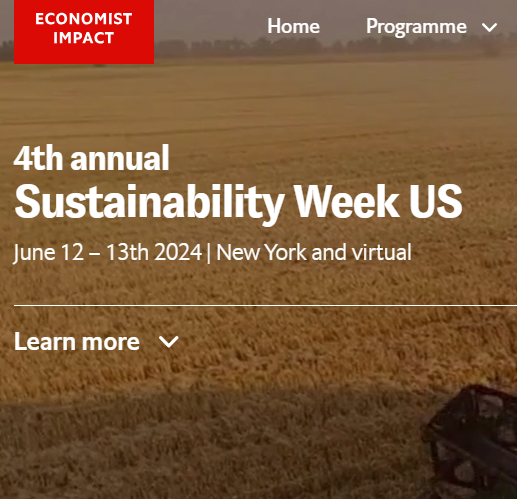
Demonstrating a measurable return on investment in business transformation is hard. But boards and external investors require it, and a clear business case helps organisations secure resources to implement change. Sustainability professionals are meeting more challenges in achieving their targets, from
May 11, 2024 Read Full Article
Carbon Auditing Professional Training Program --- June 17-19, 2024 --- Schnecksville, PA

The Central Pennsylvania Chapter of the Association of Energy Engineers, in partnership with the Sustainable Energy Fund, is hosting a Carbon Auditing Professional Training Program This Association of Energy Engineer training program is designed to provide attendees with background knowledge, fundamentals, guidance, and
May 10, 2024 Read Full Article
British Truck Racing Championship Makes Cmmitment to Using Sustainable Fuel
(BARC) The British Truck Racing Championship has announced its commitment to using a more sustainable fuel from the 2023 season onwards. In the first major step on its road to greater sustainability, the championship has partnered with the UK’s leading provider of
May 10, 2024 Read Full Article
Winter Canola Offers New Income Potential to Mid-South Farmers
by Rhonda Brooks (AgWeb) Sometime in the next two or three weeks, Brandon Whitt says his winter canola crop will be ready to harvest. In North Dakota, where the bulk of the popular oilseed is grown in the U.S., this would be
May 10, 2024 Read Full Article
Biofuesl as Marine Fuels under the IMO's and EU's Regulatory Framework
(American Bureau of Shipping Regulatory News) This Regulatory News provides background information and guidance for the use of biofuels for Class, EU and IMO requirements. -- With new regulations aimed at reducing air pollutants and greenhouse gases (GHGs), there is increased interest
May 10, 2024 Read Full Article
For Sustainable Aviation Fuel, Researchers Engineer a Promising Microorganism for Precursor Production
(U.S. Department of Energy) Pseudomonas putida is a useful microorganism for producing the sustainable aviation fuel precursor isoprenol due to its ability to use renewable sources of carbon. -- Sustainable aviation fuels made from renewable sources of carbon could reduce carbon dioxide
May 10, 2024 Read Full Article
Hydrogen & Fuel Cells Energy Summit --- October 1-2, 2024 --- Valencia, Spain

ACI’s Hydrogen & Fuel Cells Energy Summit will be taking place on the 1st & 2nd October 2024 in Valencia, Spain. Join us as we continue to explore and invest in this rapidly growing industry. The 7th edition of the
May 10, 2024 Read Full Article
Japanese Media Team Visits U.S. Ethanol Production Chain In Illinois
(U.S. Grains Council) Last week, the U.S. Grains Council (USGC) led a group of Japanese journalists interested in biofuel production on a tour of several U.S. ethanol plants and organized meetings with supply chain leaders and policymakers to help the Japanese
May 10, 2024 Read Full Article
Fuels of the Future: Unpacking the Pathway for Advanced Fuels in Brazil
by Priscila Pinheiro (S&P Global) New renewable diesel and sustainable aviation fuel mandates in Brazil have attracted investors to the domestic market, with a focus on regional supply security while also looking to meet the country's energy transition requirements. On March 13,
May 10, 2024 Read Full Article
2024 Maryland Clean Energy Summit --- October 7-8, 2024 --- College Park, MD

Hosted by MCEC and our partners, the 2024 Maryland Clean Energy Summit will convene forward thinkers in policy and research, business and utility sector leaders, capital providers, and finance partners for vibrant conversations and thought-provoking presentations. Mark your calendars to attend
May 10, 2024 Read Full Article
NREL Biomass Technology a Cornerstone of SAFFiRE Renewables Biofuel Pilot Plant Going Up in Kansas
(National Renewable Energy Laboratory) On its path to opening a facility designed to turn agriculture residue into a scalable biofuel business, SAFFiRE Renewables, LLC plans to break ground on its pilot plant near Liberal, Kansas, in late 2024. In 2023, the company
May 10, 2024 Read Full Article
AOA Thursday 5-9-2024 Agriculture of America Podcast
(American Ag Network) On Thursday's AOA, with guest host Mike Adams, we have another busy show today. In Segment One we have Mike Zuzolo with Global Commodity Analytics to discuss markets and the upcoming WASDE reports. In Segment Two we discuss
May 10, 2024 Read Full Article
DOE Re-Opens Funding Opportunity for Carbon Dioxide Transport Networks to Manage Carbon Emissions
(U.S. Department of Energy) Funding from President Biden’s Investing in America Agenda will help connect sources of carbon dioxide to locations for geologic storage or conversion through multiple transport modes -- The U.S. Department of Energy’s (DOE) Office of Fossil Energy and
May 10, 2024 Read Full Article
Webinar – From Local to Global: The Climate Solutions We Need Now
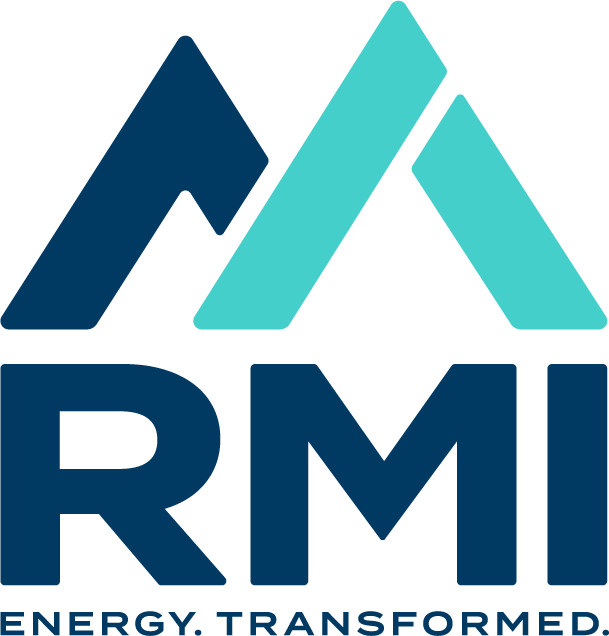
From your neighborhood to your home, the transition to clean energy starts locally. And with everyone pitching in, we can scale local climate solutions globally, even in the face of national and subnational power shifts. Join RMI’s Habiba Daggash, Whitney Mann, and
May 10, 2024 Read Full Article
Boric Presents Plan to Produce Green Hydrogen: "A Window of Opportunity for Chile"
(infobae (Google Translation)) The Chilean president, Gabriel Boric, presented this Thursday the Green Hydrogen Action Plan, a set of 80 measures with which Chile seeks to reduce the installation and production costs of green hydrogen by 2030, and thus become
May 10, 2024 Read Full Article
The Digest’s 2024 Multi-Slide Guide to Gevo
by Jim Lane (Biofuels Digest) Gevo addresses the market need of reducing greenhouse gas emissions with sustainable alternatives, and is commercializing the next generation of advanced, bio-based renewable fuels with sustainable aviation fuel, renewable premium gasoline, and renewable natural gas that
May 10, 2024 Read Full Article
Antwerp-Bruges and Namport to Invest in Hydrogen and Ammonia Export Hub
(World Cargo News) Port of Antwerp-Bruges partners with Namport to develop a EUR 250M hydrogen export hub in Walvis Bay, leveraging Namibia’s solar energy advantage. -- The Port of Antwerp-Bruges collaborates with Namport, a state-owned Namibian port operator, to establish a hydrogen
May 10, 2024 Read Full Article
Never Stop Educating
Doug Durante (Clean Fuels Development Coalition/South Dakota Farmers Union) For all of us long-time ethanol supporters, we share the frustration that American agriculture and the ethanol we produce is so often misunderstood. We were reminded of this after participating in the
May 10, 2024 Read Full Article
Airlines Clash with the EU over Greenwashing Claims
by Tommaso Lecca (Politico) The Commission has given 20 airlines a 30-day ultimatum to correct their claims. Here’s why. -- ... Twenty airlines now under investigation by the Commission for alleged greenwashing; Brussels launched the action on April 30, following a warning issued by the European
May 09, 2024 Read Full Article
Gloucestershire Restoration Company Coverts to Biodiesel
by Nicky Godding (The Business Magazine) Conservation and restoration pioneers Stonehealth, based at Draycott Business Park at Dursley has converted its iconic machinery to be able to run on biodiesel. All future machines sold by the Gloucestershire company will be able to run
May 09, 2024 Read Full Article
IKEA Selects Hapag-Lloyd for Biofuel Shipments
by Sam Chambers (Splash247.com) Hapag-Lloyd has entered a cooperation with IKEA to use biofuel for shipments from Asia in a year’s trial period, something the Scandinavian retail giant estimates will slash CO2 emissions by around 100,000 tonnes. IKEA’s goal is to reduce
May 09, 2024 Read Full Article
USDA, UNL Celebrate ‘New Frontier’ of Nebraska’s Ag Research and Innovation Partnership
by Zach Wendling (Nebraska Examiner) University of Nebraska officials Monday welcomed the groundbreaking of a new U.S. Department of Agriculture facility that they say will “expand the frontiers of agriculture.” Joined by Nebraska’s federal and state leaders, NU leaders at Nebraska Innovation
May 09, 2024 Read Full Article
BDO ZoneCONNECT Webinar: Southwest Nova Scotia, Canada & Richland, Louisiana
Ecostrat Inc. (ecostrat.com), in collaboration with TheDigest (biofuelsdigest.com), hosted the BDO ZoneCONNECT webinar, spotlighting two top BDO Zone communities in North America: Southwest Nova Scotia, Canada, and Richland Parish, Louisiana. This one-hour event provided an in-depth exploration of the biobased
May 09, 2024 Read Full Article
NBAA, Others at Washington Forum Highlight Ways Bizav is ‘Climbing Fast
(Climbing.Fast) The start of the 2024 International Aircraft Owners and Pilots Association’s 30th World Assembly was marked by an upbeat assessment from a gathering of general aviation leaders about the current state of the industry, and the potential for a coming era of
May 09, 2024 Read Full Article
13th Annual LCFS & Carbon Markets Workshop --- January 14-16, 2025 --- San Diego, CA

Navigating Carbon Frontiers: Insights, Innovations, and Impact Join us for the 13th Annual OPIS LCFS & Carbon Workshop, where thought leaders, industry pioneers, and policymakers converge to explore the ever-evolving landscape of carbon markets, clean fuel standards, and sustainable energy solutions. This
May 09, 2024 Read Full Article
Clean Fuels Summit --- June 12-13, 2024 --- Lake Charles, LA

The Clean Fuels Summit is the largest clean transportation conference and expo in the Gulf-South that explores technologies and best practices for public and private fleet seeking to reduce their transportation emissions. Practical Fleet-Focused Information The Clean Fuels Summit provides attendees with
May 09, 2024 Read Full Article
EBRD Approves EUR 60m Loan for Biofuels Project in Ukraine
(REnewables Now) The European Bank for Reconstruction and Development (EBRD) has agreed to provide a EUR-60-million (USD 64.4m) senior secured loan to support a privately owned project for the construction of a greenfield biofuels project in Ukraine. The loan has been granted
May 09, 2024 Read Full Article
Fratelli Cosulich Adds New Methanol and Biofuel Bunker Barge to Its Fleet
by Ajsa Habibic (Offshore Energy) Italian maritime transportation group Fratelli Cosulich has taken delivery of the newbuild chemical bunker barge equipped to carry methanol and biofuels up to B100. -- The newbuild, named Marta Cosulich, was built by the Chinese yard Zhejiang
May 09, 2024 Read Full Article
NYK, GCMD Address Continuous Biofuel Use
by Dom Magli (Port Technology International) The Global Centre for Maritime Decarbonisation (GCMD) has partnered with NYK Line to begin Project LOTUS (long-term impact of continuous biofuel usage on vessel operations). This six-month study will test the continuous usage of a biofuels
May 09, 2024 Read Full Article
Tata Steel First Indian Steel Company to Ship Raw Material from Australia Using Biofuel Blend
(The Avenue Mail) Tata Steel becomes the first Indian steel company to undertake a full-laden leg voyage from East Coast Australia to India, powered by a B24 biofuel blend with VLSFO (Very Low Sulphur Fuel Oil). This voyage sets a new
May 09, 2024 Read Full Article
Ecostrat and Bioindustrial Innovation Canada (BIC) Launch Online Tool for Assessing Regional Readiness for Biobased Development
(Bioeconomy Development Opportunity Zone Initiative) BDOSAT: Empowering communities to tap into the trillion-dollar bioeconomy sector -- Ecostrat Inc., the Bioeconomy Development Opportunity (BDO) Zone Initiative and Bioindustrial Innovation Canada (BIC) have collaborated to launch the new Bioeconomy Development Opportunity Zone Self Assessment Toolkit (BDOSAT). This powerful online tool
May 09, 2024 Read Full Article
CALL FOR ABSTRACTS Value of Biogas West --- October 7-9, 2024 --- Vancouver, British Columbia, Canada DEADLINE June 28, 2024
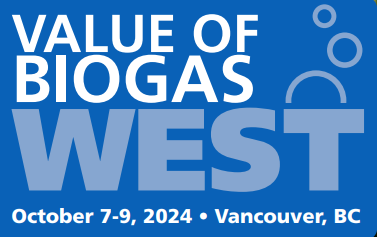
The 2024 Value of Biogas West is heading back to Vancouver this fall! Complete with two full days of programming, an expanded exhibit space and more than 10 hours of networking, you won’t want to miss out on Canada’s premier
May 09, 2024 Read Full Article
4th ICIS Pan American Oleochemicals Conference --- October 2-3, 2024 --- Miami, FL

The event spotlighting the Pan American oleochemicals industry returns to Miami! Back in the sun-drenched city of Miami, the 4th ICIS Pan American Oleochemicals Conference connects industry leaders from across the value chain to stay updated, exchange insights, and network. The
May 09, 2024 Read Full Article
Hydrogen Fuel of Future, Vehicles Will Run on Green Fuels in Coming Years: Gadkari
(Press Trust of India/MSN) Hailing hydrogen as the "fuel of the future", Union minister Nitin Gadkari on Wednesday asserted that vehicles in the country would run on green fuels in the coming years. Addressing an election rally in support of BJP leader
May 09, 2024 Read Full Article
Why Is Breaking Down Plant Material for Biofuels So Slow?
by Gail McCormick (Pennsylvania State University) Penn State researchers have revealed how molecular roadblocks slow the breakdown of cellulose, an abundant renewable resource in plants -- Cellulose, which helps give plant cell walls their rigid structure, holds promise as a renewable raw
May 09, 2024 Read Full Article
Bunker Holdiing and SyntexNRG Announce Green Methanol Supply Agreement
(Bankers Capital International/EIN Presswire) Bunker and SyntexNRG to focus on decarbonization of maritime industry. -- Bunker Holding A/S, one of the world's leading marine fuel suppliers, and SyntexNRG Inc., a renewable fuels and technology development company, today (May 7, 2024) announced that they have entered
May 09, 2024 Read Full Article
MAPFRE’s Biomethane Fund Receives Support from Official Credit Institute
(MAPFRE) Through its venture capital subsidiary Axis, Spain’s Official Credit Institute has earmarked €15 million for this investment vehicle; The insurance group’s fund already has nine plants in development in the Spanish regions of Extremadura, Castile and León, and Madrid -- Spain’s Official
May 09, 2024 Read Full Article
World Energy Announces Sustainable Aviation Fuel Agreement with Boston Consulting Group to Step Up Decarbonization Investment
(World Energy) Boston Consulting Group (BCG) today announced it has signed an agreement for the purchase of sustainable aviation fuel certificates (SAFc) with World Energy, the sustainable aviation fuel (SAF) producer and low-carbon solutions provider. A key part of BCG’s commitment
May 09, 2024 Read Full Article
Celly Partners With Yosemite Clean Energy to Drive Carbon-Negative Biofuel Innovation and Sustainable Fuel Distribution
(Yosemite Clean Energy/Newswire) Yosemite Clean Energy, a leading innovator in the production of carbon-negative biofuels, is thrilled to announce its strategic partnership with Celly, a pioneering force in low-carbon and sustainable fuel distribution. This collaboration marks a significant step towards advancing
May 09, 2024 Read Full Article
The Digest’s 2024 Multi-Slide Guide to NEXT Renewables
by Jim Lane (Biofuels Digest) Linde is a leading global industrial gases and engineering company with 2021 sales of $31 billion (€26 billion). The company serves a variety of end markets including chemicals & energy, food & beverage, electronics, healthcare, manufacturing,
May 09, 2024 Read Full Article
Carbon to Value Initiative Says 4th Cohort Is Open for Apps: Cohort I-III Companies Raised $410M in Follow-on Funding DEADLINE June 21, 2024
by Jim Lane (Biofuels Digest) From Massachusetts, New York and Texas, we received news that the Carbon to Value Initiative, a partnership of the Urban Future Lab at NYU Tandon School of Engineering (UFL), Greentown Labs, and Fraunhofer USA has opened the
May 09, 2024 Read Full Article
Modeling GHG Emissions from Source Separated Organics
by Romy Carpenter and Andrew Carpenter (BioCycle Magazine) New study assesses greenhouse gas emissions from five management options for SSO collected from residential, commercial, and institutional sources in New York City. -- The New York City Department of Environmental Protection (NYC DEP) worked
May 08, 2024 Read Full Article
EPA, FDA, and USDA Issue Joint Regulatory Plan for Biotechnology
(U.S. Food and Drug Administration) In response to President Biden’s Executive Order 14081, “Advancing Biotechnology and Biomanufacturing Innovation for a Sustainable, Safe, and Secure American Bioeconomy,” the U.S. Environmental Protection Agency (EPA), the U.S. Food and Drug Administration (FDA), and
May 08, 2024 Read Full Article
Farnek’s Biogas Initiative Improves Lives of Rural Nepalese Families
(Far Eastern Agriculture) Top executives from the ESG (Environment, Social & Governance) team of leading UAE-based smart and green facilities management (FM) company Farnek, revisited Nepalese families that received Farnek biogas plants In 2015, the plants were installed by Farnek technicians to
May 08, 2024 Read Full Article
Premiere for the Porsche Mobil 1 Supercup with eFuels
(Porsche) The Porsche Mobil 1 Supercup will start the new season with eFuels that are potentially near-carbon-neutral. The feedstock comes from the Haru Oni pilot plant. The up to 32 racing cars in the Supercup will be fuelled exclusively with eFuels
May 08, 2024 Read Full Article
Environmental, Energy & Transportation Justice Summit --- June 20, 2024 --- Washington, DC

This forum will break down historical racial disparities in transportation, energy, and the environment. We will discuss the strategies and best practices to ensure that the transportation sector is used to benefit historically marginalized groups. The event will occur at the
May 08, 2024 Read Full Article
Thompson: Cleaner Transportation Fuels Can Save Lives
by Antoine M. Thompson (Washington Informer/Greater Washington Region Clean Cities Coalition) One of the biggest challenges in communities of color are higher rates of asthma and respiratory-related illnesses. I know this firsthand from growing up in the inner city of Buffalo. My
May 08, 2024 Read Full Article
International Biomass Conference Series: Live With CAAFI
(Biomass Magazine) Produced by Biomass Magazine, CAFFI’s Executive Director, Steve Csonka, chats about what's new with CAFFI and the Sustainable Aviation Fuels Industry. Recorded live at the 2024 Int'l Biomass Conference & Expo in Richmond, Virginia. Hosted by Anna Simet, Editor.
May 08, 2024 Read Full Article
Co-Processing SAF: Standards, Incentives and Regulation
by Maria J. L. Perez and Milica Folić (Topsoe/Biomass Magazine) ... One method of SAF production, known as co-processing, has emerged as a viable solution in the here and now. But what are the regulations and standards that producers need to
May 08, 2024 Read Full Article
P6 Technologies Launches Life Cycle Assessment Software for Biogas
(P6 Technologies/Biomass Magazine) P6 Technologies Inc., the leader in life cycle analysis (LCA) software for renewable fuels, biogas, and chemical companies, on May 2 announced the launch of its LCA for biogas cloud-based software solution. This marks a significant milestone for P6 as
May 08, 2024 Read Full Article
U.S. Department of Energy Releases Request for Information to Achieve Off-Road Transportation Decarbonization DEADLINE June 7, 2024
(U.S. Department of Energy) The U.S. Department of Energy’s (DOE) Bioenergy Technologies Office (BETO), Vehicle Technologies Office (VTO), and Hydrogen and Fuel Cell Technologies Office (HFTO) have jointly released the Progression of Net-Zero Emission Propulsion Technologies for the Off-Road Sector Request for Information (RFI). The purpose of this RFI is to
May 08, 2024 Read Full Article
Better Production Practices Key to Minimising Impact of Vegetable Oils – IUCN Report
(International Union for Conservation of Nature and Natural Resources) A new report from the IUCN Oil Crops Taskforce, released today (May 7, 2024), assesses the future environmental, economic and social impact of the production, trade and the consumption of vegetable oils. The Task Force
May 08, 2024 Read Full Article
Cooperfarms Presents a Proposal to the BNDS to Build a Corn and Sorghum Ethanol Plant
(Cooperfarms) Last Tuesday (30/04), the manager of the Industrial Committee of the Rural Producers Cooperative (Cooperfarms), Celestino Zanella, filed with the National Bank for Economic and Social Development (BNDS), in Rio de Janeiro/RJ, the indication of the project to build a
May 08, 2024 Read Full Article
$94M Summit Ridge Capital Deal Fuels CMM's Green Fleet Expansion in Brazil
(Compagnie Maritime Monegasque (CMM)/PR Newswire) In a significant stride toward sustainable maritime operations, Compagnie Maritime Monegasque (CMM) announced the closing of up to $94 million in financing. The transaction was funded by Summit Ridge Capital Partners. Panorama Capital Partners sourced and advised on
May 08, 2024 Read Full Article
Virgin Atlantic’s Flight100 Saved 95 Tonnes of CO2 and Demonstrated Environmental Benefits of Sustainable Aviation Fuel
(Virgin Atlantic) “If enough SAF is made, we will fly it” -- • Headline Flight100 results pave the way for the use of 100% Sustainable Aviation Fuel (SAF), proving it’s a safe drop-in replacement for fossil fuel The use of 100% SAF saved
May 08, 2024 Read Full Article
Gevo’s Verity and ClearFlame Announce Transportation Decarbonization Collaboration(G
(Gevo) Gevo, Inc. (NASDAQ: GEVO), along with its wholly owned subsidiary, Verity Holdings, LLC, (“Verity”), and ClearFlame Engine Technologies, Inc., (“ClearFlame”) announced today a collaboration to drive decarbonization traceability from field-to-fleet for the road freight transportation market in the United States,
May 08, 2024 Read Full Article
TPG Rise Climate to Acquire Olympus Terminals, Leading Renewable Fuels Logistics Provider
(TPG Rise Climate) Modernized Import Infrastructure & Storage Firm Critical for Enabling Decarbonized Transportation -- TPG Rise Climate, the dedicated climate investing strategy of TPG’s global impact investing platform TPG Rise, today announced that it has signed a definitive agreement to acquire
May 08, 2024 Read Full Article
Australian Researchers Eye Sustainable Aviation Fuel from Landfill Gases
by James Redmayne (Reuters) Australian researchers have developed a chemical process that could produce sustainable aviation fuel from landfill gases as a way of cutting carbon emissions, they said on Wednesday. ... The Sydney University scientists used non-thermal plasma technology that fires high-energy
May 08, 2024 Read Full Article
Singapore Airlines Group Orders Sustainable Aviation Fuel from Neste
(Neste/Singapore Airlines Group) SIA and Scoot the first airlines operating out of Changi Airport to receive SAF produced in Neste’s refinery in Singapore; Neste to deliver blended SAF directly to Changi Airport’s fuel hydrant system, reinforcing their end-to-end SAF supply chain capabilities
May 08, 2024 Read Full Article
Taking DCO Extraction to the Max: How Ace Ethanol Manages the Task
by Kathy Weitz (Ethanol Producer Magazine/GEA North America) When it comes to distillers corn oil (DCO) generated as a coproduct of ethanol production, every drop adds to the overall profitability of the operation. That’s why the initial stillage separation and subsequent
May 08, 2024 Read Full Article
Doubts Abound over US Midcon E15 Shift: NATSO
by Zach Appel (Argus Media) An effort by eight US midcontinent states to start selling 15pc ethanol (E15) gasoline blends year-round starting in 2025 remains unlikely, according to US fuel retailer trade association NATSO. The US approved last month the request from Illinois, Iowa,
May 08, 2024 Read Full Article
Suspicions of Fake China Cooking Oil Alarm US Biofuel Industry
by Kim Chipman, Tarso Veloso, and Michael Hirtzer (Bloomberg) ... One of the biggest concerns is that China shippers are adding UCO to fresh palm oil. Palm, the world’s most widely used vegetable oil, is a bane to environmentalists and many countries
May 08, 2024 Read Full Article
From Liability to Asset: How to Turn FOG from a Crisis into an Opportunity
(Greasezilla/EIN Newswire) Revolutionary new technology converts fats, oil and grease from sewer-clogging mess costing cities billions into saleable, renewable biofuel -- People love to dine out, but there’s a dark side to restaurant cooking. Along with refuse from animal product cooking and
May 07, 2024 Read Full Article
Will Making Hydrogen ‘Green’ Depend on China?
by Christian Robles (E&E News) Machinery that makes hydrogen fuel from water could become another energy technology whose production is centered in Asia. ... China leads the world in producing the essential technology for green hydrogen made from renewables: electrolyzers. The machines use
May 07, 2024 Read Full Article
The Sometimes-Deadly Gap in US Pipeline Safety
by Arianna Skibell (Politico's Power Switch) ... The country’s system for safeguarding against toxic and deadly pipeline accidents largely relies on inspectors who work for the pipeline companies themselves, which has led to poor oversight and leaks, landslides, and even explosions, according
May 06, 2024 Read Full Article
U.S. Energy, Ohio Transit System Sign Long-Term RNG Supply Agreement
by Jay Miller (NGT News) U.S. Energy, a provider of refined products, alternative fuels and environmental credits, signed a long-term renewable natural gas (RNG) supply agreement with the Canton, Ohio-based Stark Area Regional Transit Authority (SARTA), a low/no-emission public transit system. Under
May 06, 2024 Read Full Article
Biomethane and CO2
(Biomethane RNG Channel) Is biomethane an ally in the fight against climate change? Definitely. As Luis Alberto Sebastián Gonzalez explains in this interview, biomethane can be considered a low-carbon energy source because the CO2 emitted during its production comes from renewable
May 06, 2024 Read Full Article
UAE Plans $13.5 Billion Investment in Brazil Biofuels
by Irina Slav (OilPrice.com) The Abu Dhabi sovereign wealth fund’s investment arm, Mubadala Capital, plans to make a substantial investment in biofuels in Brazil, the Financial Times has reported, quoting the head of Mubadala’s Brazilian operations. The $13.5-billion investment in biofuels is part
May 06, 2024 Read Full Article
CALL FOR PROPOSALS €213 Million Available for Advancing Europe’s Circular Bio-based Economy DEADLINE September 18, 2024
(Circular Bio-based Europe Joint Undertaking) CBE JU published its 2024 call for project proposals. A total of €213 million will be dedicated to advancing competitive circular bio-based industries in Europe across 18 topics. All stakeholders of the circular bio-based sector
May 06, 2024 Read Full Article
Louis Dreyfus Company (LDC), Global Clean Energy Holdings, Inc., and Bayer Announce Strategic Collaboration to Promote Camelina Cultivation in Argentina as Part of Bayer's PRO Carbono Program
(Louis Dreyfus Company/Business Wire) Louis Dreyfus Company (LDC), Global Clean Energy Holdings, Inc., and Bayer announced today (May 2, 2024) a strategic collaboration to promote camelina cultivation as part of Argentina Bayer's PRO Carbono Program, in line with the companies' efforts to
May 06, 2024 Read Full Article
Carbon Clean Achieves Fabrication Milestone on FlagshipONE with the Project’s First Carbon Capture Unit Module
(Carbon Clean) Carbon Clean, a leader in revolutionising carbon capture solutions, has achieved a fabrication milestone on Ørsted’s FlagshipONE project, Europe’s largest commercial-scale eMethanol facility under construction. The first equipment has been mounted on the structural steel of the first module,
May 06, 2024 Read Full Article
The Digest’s 2024 Multi-Slide Guide to the National Biotechnology and Biomanufacturing Initiative
by Jim Lane (Biofuels Digest) The White House Office of Science and Technology Policy has been catalyzing a surge in reports and plans relating to accelerating the transition to biotechnology — including the Bold Goals launched at ABLC 2024, the PCAST
May 06, 2024 Read Full Article
The Case for E-fuels Use in Aviation
by Pete Rocha (LEC Partners/Biofuels Digest) The aviation industry produces 2-3% of all CO2 emissions globally. This percentage will likely grow over time as the developing world becomes richer and the demand for air transportation increases. In the graphic below, we
May 06, 2024 Read Full Article
Japan, Brazil Agree to Promote Biofuels and Hybrid Vehicles
Hiroyuki Akiyama and Niki Mizuguchi (Nikkei Asia) Kishida and Lula hope to cooperate more on trade and decarbonization -- Japanese Prime Minister Fumio Kishida and Brazilian President Luiz Inacio Lula da Silva vowed on Friday to deepen cooperation on decarbonization while laying out
May 06, 2024 Read Full Article
Senators Angle for Energy, Enviro Amendments in FAA Bill
by Andres Picon (E&E News Lawmakers are hoping to pass the Federal Aviation Administration’s reauthorization bill — with or without amendments — in the coming days. -- Congressional leaders this week will race to pass a reauthorization for the Federal Aviation
May 06, 2024 Read Full Article
Volvo Peru Delivers the First LNG Tractors to HAM Criogénica Perú
(HAM Criogénica Perú) The vehicles have HPDI technology -- Volvo Peru has delivered its first LNG tractors on the South American continent. These vehicles have been acquired by HAM Criogénica Perú and are characterized by having high pressure direct injection (HPDI), which
May 06, 2024 Read Full Article
SAS and Inter Terminals Invest in Infrastructure for Sustainable Aviation Fuel
(SAS) Inter Terminals Sweden, in collaboration with SAS, is expanding its aviation fuel facility in the Port of Gävle by converting tanks from conventional fossil heating oil storage to a blending and storage facility for Sustainable Aviation Fuel (SAF). SAS has set
May 03, 2024 Read Full Article
Navigating Today’s Hydrogen Market: An EPC’s Perspective --- May 22, 2024 --- ONLINE

Join experts from S&B to gain a fresh perspective on recent EPC trends in the “green” and “blue” hydrogen and derivatives market. During this webinar, you’ll also receive a deep dive into emerging alternative models for project execution and risk
May 03, 2024 Read Full Article
Commodity Groups Appeal Fuel Test Rule
by Todd Neeley (DTN Progressive Farmer) Commodity Groups: Ethanol Threatened by Fuel-Test Rule Buried in EV Mandate -- New fuel economy test procedures contained in the Biden administration's final pollution standards for passenger vehicles penalize ethanol and should be declared unlawful, three
May 03, 2024 Read Full Article
U.S. Ethanol and SAF Industry Leaders Seek to Intervene in Legal Challenge to EU Sustainable Aviation Fuel Regulation
(Renewable Fuels Association) Leaders of the U.S. ethanol industry are seeking to intervene in a legal challenge of the ReFuelEU Aviation Regulation, which effectively bans the use of renewable, crop-based biofuels like corn ethanol as a feedstock for decarbonizing the aviation sector. Collaborating
May 03, 2024 Read Full Article
Neste Partners with the Exponential Roadmap Initiative
(Neste) Neste and the Exponential Roadmap Initiative (ERI) have started collaboration aiming to align with the criteria of the UN Climate Change High-Level Champion’s Race to Zero. The aim of the collaboration is to reach net zero greenhouse gas emissions by
May 03, 2024 Read Full Article
bp's Archaea Energy Brings Online Its Largest Modular RNG Plant to Date in Kansas
(bp) The plant can convert 9,600 standard cubic feet of landfill gas per minute into lower-carbon renewable natural gas (RNG). Plant is expected to produce enough renewable natural gas to heat up to 38,000 homes annually, according to the EPA Landfill
May 03, 2024 Read Full Article
FuelCell Energy and Toyota Motor North America Celebrate Launch of World's First 'Tri-gen' Production System at the Port of Long Beach
(Toyota/PR Newswire) FuelCell Energy's Tri-gen technology produces three products: renewable electricity, renewable hydrogen, and usable water; Marks Toyota's first port vehicle processing facility in the world to be powered by onsite-generated, 100 percent renewable electricity; Both light-duty and Class 8 heavy-duty fuel cell
May 03, 2024 Read Full Article
The Digest’s 2024 Multi-Slide Guide to Cemvita
by Jim Lane (Biofuels Digest) We’ve engineered microbes that turn the waste such as CO2 into helpful compounds, therefore closing the carbon/waste loop and address those recovery and production processes that, in current heavy industry, creates waste and emission outputs. Cemvita’s Pedro
May 03, 2024 Read Full Article
TOTAL – Word of the Week
TOTAL drop-in FUELS REFER to biofuels that can be used as a 100% direct replacements for conventional petroleum-BASED FUELS without requiring modifications to existing infrastructure or vehicle engines. TOTAL drop-in fuels, OFTEN derived from renewable biomass sources, offer a promising
May 03, 2024 Read Full Article
Are Cleaner Hydrocarbons Possible?
(Climate Now) Just over 70% of humanity’s energy consumption comes from hydrocarbons like coal, oil, and natural gas. The world is dependent on hydrocarbons, not just for energy but also for plastics, contact lenses, and computers, and so many other things. Using hydrocarbons like fossil fuels
May 02, 2024 Read Full Article
The European E-Fuels Conference --- November 6-7, 2024 --- Hamburg, Germany

Building on the success of our 2023 edition which brought over 170 senior level attendees to Dusseldorf, we are delighted to be back with ACI’s European E-Fuels Conference on the 6th & 7th of November 2024 in Hamburg. The 2024 edition of the conference will once
May 02, 2024 Read Full Article
Argus Guide to the EU CBAM Regulation
(Argus Media) The Argus Guide to EU Carbon Border Adjustment Mechanism (CBAM) is extremely timely and insightful. It explains what CBAM is, how it will work, the timeline and what it means for the fertilizer sector in Europe and abroad. Key
May 02, 2024 Read Full Article
U.S. Paves Way for UN to Declare 2026 as International Year of the Woman Farmer
(U.S. Department of Agriculture) Today, in the presence of U.S. Ambassador to the United Nations Linda Thomas-Greenfield and U.S. Department of Agriculture Deputy Secretary Xochitl Torres Small, the UN General Assembly declared 2026 as the International Year of the Woman Farmer.
May 02, 2024 Read Full Article
ChemCatBio Seeks Community Feedback On Local Manufacturing
The Chemical Catalysis for Bioenergy Consortium (ChemCatBio), a U.S. Department of Energy (DOE) Bioenergy Technologies Office (BETO) consortium, wants to hear questions, comments, or concerns to help find ways to increase the benefits and decrease the burden of new industry
May 02, 2024 Read Full Article
Cleaner Burning Aviation Fuels Poised for Takeoff
by Amena H. Saiyid (Cipher) ... Clean jet fuel production is expected to surge in the United States in the next 10 years aided by rapid advances in technology, generous federal incentives and growing demand from airlines, according to new projections from Oslo-based consultancy
May 02, 2024 Read Full Article
Biofuels Offer Low-Hanging Fruit in Nascent Carbon Capture Industry
by Amena H. Saiyid (Cipher) Biofuel producers are taking up carbon capture and storage technology faster than any other industry in the United States as demand grows for cleaner fuels for shipping and aviation. Four out of every ten carbon capture and
May 02, 2024 Read Full Article
The European Carbon Dioxide Utilisation Summit 2024 --- September 18-19, 2024 --- Berlin, Germany

In the face of climate change and the urgent need to reduce greenhouse gas emissions, ACI’s European Carbon Dioxide Utilisation Summit serves as a pivotal platform for exchanging ideas, sharing knowledge, and fostering collaborations that drive the adoption of carbon dioxide utilisation
May 02, 2024 Read Full Article
2024 Congressional Renewable Energy and Energy Efficiency EXPO and Policy Forum --- July 30, 2024 --- Washington, DC and ONLINE

The Environmental and Energy Study Institute (EESI) and the House and Senate Renewable Energy and Energy Efficiency (REEE) Caucuses invite you to join us for the 27th Annual Congressional Renewable Energy and Energy Efficiency EXPO and Policy Forum (EXPO 2024). Top-level speakers will showcase technologies and
May 02, 2024 Read Full Article
Quadrise and Vertoro Commit to Accelerating Sea-Trials of Sustainable Marine Fuels
(Quadrise/London Stock Exchange) Quadrise Plc (AIM: QED), the supplier of innovative energy solutions for a cleaner planet, provides an update on its Joint Development Agreement ("JDA") with biofuel specialists, Vertoro BV ("Vertoro"). Quadrise has been collaborating with Vertoro since September 2022 to incorporate their novel
May 02, 2024 Read Full Article
Holland America's Rotterdam Begins Long-Term Biofuel Test
by Anne Kalosh (Seatrade Cruise News) Holland America Line's Rotterdam began a long-term biofuel test using 100% low carbon intensity biofuel while sailing in the Norwegian Fjords. The ship bunkered the biofuel before leaving the Port of Rotterdam April 27 and will
May 02, 2024 Read Full Article
Algae: King Of Renewable Biofuels Or Fad Gone By?
by Grace Wu (Environmental Magazine) In recent years, algae has emerged as a potential renewable and less pollutive energy resource. Some species have high levels of fat, carbohydrates and proteins that can produce up to 30 times more energy than other
May 02, 2024 Read Full Article
California Clean Air Day --- October 2, 2024 --- Various Locations in California

California Needs You to Step Up! Commit and come together to take at least one action on or by #CleanAirDayCA. Take the individual pledge to challenge yourself to take the actions we know are essential to clean air, like taking transit,
May 02, 2024 Read Full Article
European Hydrogen Bank Pilot Auction Results
(European Commission)The first EU-wide auction (IF23 Auction) for the production of RFNBO (renewable fuel of non-biological origin) hydrogen was launched on 23 November 2023 and closed on 8 February 2024. The auction attracted 132 projects bids from 17 European countries You
May 02, 2024 Read Full Article
Nebraska Kicks Off Renewable Fuels Month
by Cindy Zimmerman (Energy.AgWired.com) Nebraska Gov. Jim Pillen signed a proclamation Wednesday to officially kick off May as Renewable Fuels Month in the state. The proclamation was made during a ceremony at the State Capitol underscoring the pivotal role that renewable fuels play in
May 02, 2024 Read Full Article
Bergen Engines Selected for World’s Largest Hydrogen Ferries
(Bergen Engines) Bergen Engines, a leading producer of medium-speed engines and generating sets, has been selected to provide four C25:33L8A generating sets to support the world’s largest hydrogen ferries, operating on Norway’s longest ferry connection from Bodø to Lofoten. The generating sets will be
May 02, 2024 Read Full Article
Democrats Say Big Oil Misled Public for Decades about Climate Change
by Chase Cain (NBC News) Major oil companies have misled Americans for decades about the threat of human-caused climate change, according to a new report released Tuesday by Democrats in Congress. The 65-page report was the result of a three-year investigation and was
May 02, 2024 Read Full Article
Stabenow, Thompson Release Outlines For 2024 Farm Bill
by Erin Voegele (Ethanol Producer Magazine) U.S. Senate Agriculture, Nutrition and Forestry Committee Chairwoman Debbie Stabenow, D-Mich., and House Agriculture Chairman Glenn “GT” Thompson, R-Pa., on May 1 released outlines for competing versions of the 2024 Farm Bill. The Farm Bill is
May 02, 2024 Read Full Article
TopSoil® Summit --- June 3, 2024 --- Riverside, IA

The TopSoil® Summit is the peak event bringing together farmers, agriculturalists, and biofuel players. At this year’s event, we will be focused on Carbon Intensity to help prepare for the 45Z Tax Credits that are going into effect. Registration Cost: $50 per
May 02, 2024 Read Full Article
The Digest’s 2024 Multi-Slide Guide to Haffner Energy
by Jim Lane (Biofuels Digest) Haffner Energy’s expertise has been forged over more than 30 years of experience. 30 years’ experience designing, developing and bringing to market a pioneering, patented technology that produces clean fuels with a neutral-to-negative carbon footprint: biomass
May 02, 2024 Read Full Article
GIDARA Energy Collaborates with Aker Solutions in Equinor's Waste-to-SAF Study
(GIDARA) We are pleased to announce that GIDARA Energy's HTW® (High Temperature Winkler) technology for Gasification of solid waste to syngas has been selected by Aker Solutions (AKSO), as one of several suppliers, to contribute to a feasibility study for the Equinor Mongstad Industrial Transformation (MIT) project. The
May 02, 2024 Read Full Article
Ecostrat Inc. and Forair Execute License Agreement to Carry out BDO Zone Ratings in Quebéc, Canada
(Bioeconomy Development Opportunity Zone Initiative) License agreement will accelerate progress towards 1000 BDO Zones across North America -- Ecostrat Inc., and the BDO Zone Initiative are pleased to announce the expansion of BDO Zone Ratings into Québec with the inaugural licensing agreement with Forair. William
May 01, 2024 Read Full Article
Scania Pilot-Test Renewable Fuels and Electrification Solutions with IRDA’S IMBRT Project
(Scania) Scania pilot-tests renewable fuels and electrification solutions with Iskandar Regional Development Authority (IRDA) for the Iskandar Malaysia Bus Rapid Transit (IMBRT). Scania will be test-running two buses over the 20-kilometre loop route from 11 to 15 April; the 10-metre
May 01, 2024 Read Full Article
GROWMARK and Optimus Technologies Partner on Decarbonization Pilot
(GROWMARK) GROWMARK, Inc. has partnered with Optimus Technologies, Inc., to test biodiesel in five semi-tractors in GROWMARK’s Manito Transit fleet as a potential pathway for transitioning the entire fleet to low-carbon fuels as part of GROWMARK’s ongoing efforts to look for decarbonization
May 01, 2024 Read Full Article
Caterpillar, Vale Testing Electric and Ethanol-Powered Trucks
(Canadian Mining) Caterpillar and Vale have agreed to test battery electric haul trucks and energy transfer systems, s well as conduct studies on ethanol-powered trucks. The goal is to help Vale reduce its carbon emissions by 33% by 2030 and reach zero net emissions
May 01, 2024 Read Full Article
Republicans Intensify Fight against EPA Tailpipe Rules
by Kelsey Brugger (Politico Pro/E&E Daily) House and Senate lawmakers will introduce resolutions Wednesday to overturn the rulemaking. -- Republicans on Capitol Hill have a new favorite punching bag: President Joe Biden’s electric vehicle “de facto mandate.” On Wednesday, four GOP lawmakers are
May 01, 2024 Read Full Article
Ethanol Groups Challenge Fuel Economy Formula In EPA’s Auto Rule
(Inside EPA) Several ethanol groups are challenging EPA’s update to test-fuel requirements, adopted alongside the agency’s final passenger vehicle emissions rulemaking, claiming that a revised fuel economy calculation to account for the test fuel unlawfully boosts the stringency of fuel economy
May 01, 2024 Read Full Article
Groups Call for Farm to Fly in Energy Title
by Nicole Heslip (Brownfield Ag News) A National Corn Growers Association board member says including the Farm to Fly Act in the farm bill would help USDA recognize the science-based emissions reduction efforts of the sustainable aviation fuel supply chain. Ohio farmer John
May 01, 2024 Read Full Article
Topsoe Secures First Sustainable Aviation Fuel Project in China
by Ulrik Frøhlke (Topsoe) • Topsoe selected by Guangxi Free Trade Zone Hongkun Biomass Fuel Co., Ltd. (Guangxi Hongkun Biomass) to deliver its HydroFlex™ technology for the production of Sustainable Aviation Fuel (SAF) and renewable diesel. Based on Topsoe technology, 300,000 tons
May 01, 2024 Read Full Article
The Digest’s 2024 Multi-Slide Guide to Sustainable Change, the Worley View
by Jim Lane (Biofuels Digest) Worley’s come a long way from its origins in Sydney in the 1970s, a major player on the global energy scene now for nearly 30 years, and moving sharply into de-fossilized and de-carbonized strategies and projects
May 01, 2024 Read Full Article
Eureka Shipping Announces Construction of New Cutting-Edge Cement Carrier for Great Lakes Trade
(CSL Group/Globe Newswire) Eureka Shipping, a leading provider of sustainable, high-efficiency cement carrier services jointly owned by SMT Shipping and The CSL Group, is pleased to announce the construction of a state-of-art mechanical/pneumatic cement ship destined for operation in the Great
April 30, 2024 Read Full Article
Royal Caribbean Group Shares Comprehensive Update on its Decarbonization Journey
(Royal Caribbean Group/PR Newswire) Together, with its first Community Impact Report, the company details its progress its net-zero ambitions and supporting the communities it visits -- Royal Caribbean Group (NYSE: RCL) released its annual Seastainability Report, outlining milestones the company reached on its
April 30, 2024 Read Full Article
Huntingdonshire Partners with Cambridgeshire Police, Fire Departments for Renewable Diesel Trial in England
(Huntingdonshire District Council/Biobased Diesel Daily) The Huntingdonshire District Council in England announced April 25 that it has teamed up with the Cambridgeshire police and fire departments to conduct a trial using hydrotreated vegetable oil (HVO), also known as renewable diesel. HVO, sourced
April 30, 2024 Read Full Article
RFA Welcomes 40B Sustainable Aviation Fuel Guidance, But Says Additional Work Needed
(Renewable Fuels Association) The 40B tax credit guidance and modified GREET model released today by U.S. Treasury begin to unlock the door for U.S. ethanol producers and farmers to participate in the emerging market for sustainable aviation fuels (SAF). However, more work
April 30, 2024 Read Full Article
City Receives Grant for Renewable Fuel Program
(City of Lincoln, NE) City officials today (April 24, 2024) announced Lincoln has been awarded a $53,750 grant from the Nebraska Soybean Board to begin incorporating B20 biodiesel in its municipal fleet. The grant marks a significant milestone in the City's ongoing
April 30, 2024 Read Full Article
AGQM Publishes Biodiesel Quality Report 2023
(AGQM/Biobased Diesel Daily) Germany has once again missed its climate-protection targets in the transport sector. In order to achieve these targets, in addition to switching to electromobility and alternative-mobility concepts, the use of climate-friendly biofuels is essential, as they directly reduce greenhouse
April 30, 2024 Read Full Article
Low US Distillate Consumption Reflects Slow Economic Activity, Biofuel Substitution
(U.S. Energy Information Administration/Biobased Diesel Daily) U.S. distillate consumption so far this year is lower than usual because of warm winter weather, reduced manufacturing activity, and continued substitution of biofuels in place of petroleum distillate on the U.S. West Coast (PADD 5). As reported
April 30, 2024 Read Full Article
Biodiesel to Help Port of Detroit Improve Air Quality, Decarbonize
(Detroit/Wayne County Port Authority/Biobased Diesel Daily) The Detroit/Wayne County Port Authority in Michigan revealed details on Earth Day (April 22) of an ambitious program to dramatically improve air quality and the health of residents by cutting carbon emissions to net zero
April 30, 2024 Read Full Article
Strength in Numbers: State Legislation Driving Lower Carbon Fuels Across America
(Chevron Renewable Energy Group) Neville Fernandes, Vice President of Corporate Affairs & Development at Chevron Renewable Energy Group and member of the Clean Fuels Alliance America governing board, recently participated in a panel discussion with other policy leaders in the biofuels
April 30, 2024 Read Full Article
Volvo & Mack Fueling New Trucks with Renewable Diesel
(Work Truck) Volvo Trucks is fueling new trucks leaving the NRV plant with 20 to 25 gallons of HVO per tank, with full tanks provided for trucks destined directly to customers. -- Trucks rolling off both Volvo Trucks North America and Mack
April 30, 2024 Read Full Article
The Trucking Life of the Internal Combustion Engine Going Forward
by Jason Morgan (Fleet Equipment Magazine) The trucking industry consensus is clear: The zero-emissions trucking future will be a mix of powertrain technologies including battery electric, hydrogen fuel cell and, yes, even internal combustion engines. ... “Far too many politicians across the globe
April 30, 2024 Read Full Article
Celebration of Modern Ag on the National Mall --- May 6-8, 2024 --- Washington, DC

AEM is gearing up to fill the National Mall for the third year in a row with the latest in off-road equipment. The second Celebration of Modern Ag on the National Mall will take place Monday, May 6 – Wednesday, May
April 30, 2024 Read Full Article
Strait Energy's Unit Completes First Delivery of ISCC EU-Certified Marine Biofuel
(The Star/Bernama) : Straits Energy Resources Bhd’s (Straits Energy) subsidiary, Tumpuan Megah Development Sdn Bhd, has completed the first delivery of International Sustainability and Carbon Certification (ISCC EU) certified marine biofuel by a Malaysian supplier. Tumpuan Megah supplied 4,500 tonnes of ISCC EU-certified
April 30, 2024 Read Full Article
Monjasa and FAMOIL Expand Biofuels Logistics in South America and Complete First Supply Operation in Peru
(Monjasa) On 22 February 2024, global top 10 marine fuels company, Monjasa, supplied a total of 510 tonnes of B30 marine biofuels the Cargill operated dry bulk carrier, Infinity Sky, in the Port of Callao, Peru. This operation marked the first ISCC-certified
April 30, 2024 Read Full Article
Promising SA-First Solution to Convert Paper Sludge, Food and Textile Waste into Bioethanol
(The Paper Story) A pioneering solution has been developed to convert cellulose fibre-rich waste from pulp and paper mill operations into ethanol using a specialised fermentation process. Ethanol is a versatile starting material that finds diverse application in the production of
April 30, 2024 Read Full Article
The Digest’s 2024 Multi-Slide Guide to DG Fuels
by Jim Lane (Biofuels Digest) DG Fuels is an emerging leader in renewable hydrogen and biogenic based, synthetic low emissions aviation and diesel fuel, and this deck looks at their second-generation cellulosic biofuel and their market expansion plans, whose hydrogen content
April 30, 2024 Read Full Article
Heating Oil Industry on Track to Achieve Net-Zero Emissions by 2050
(Clean Fuels Alliance America) The Northeast heating oil industry is on track to achieve the ambitious goals set forth in the Providence Resolution, a landmark commitment made in 2019 to voluntarily reduce greenhouse gas emissions. The resolution, which was unanimously approved
April 30, 2024 Read Full Article
Federal CCS Task Forces Set to Meet after Yearlong Wait --- May 21-22, 2-24 --- Reston, VA and ONLINE
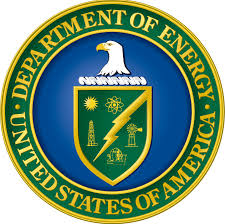
by Carlos Anchondo (Politico Pro Energywire) The law signed by then-President Donald Trump in December 2020 established two carbon capture and storage committees. -- Two task forces focused on tackling permitting challenges for carbon capture and storage projects are poised to
April 30, 2024 Read Full Article
Biofuel Tax Credit Claims Need More Scrutiny, Watchdog Says
by Erin Schilling (Bloomberg Tax) The IRS needs more authority to properly evaluate—and deny, if necessary—biofuel tax credit claims, an agency watchdog said in a new report. The Treasury Inspector General for Tax Administration evaluated biofuel tax claims and found 42 of the
April 30, 2024 Read Full Article
ORDER – A 5-Letter Word for EARTH MONTH
The transition to a GREEN economy entails a systematic, ORDERly SHIFT away from fossil fuel dependency towards renewable energy sources, sustainable practices, and circular economic MODELs. This transition typically follows a strategic ORDER, prioritizing initiatives that OFFER the greatest potential for
April 30, 2024 Read Full Article
Embraer-X Announces Partnership with Greentown Labs, the Largest Climatetech Incubator in North America
(Embraer) Embraer-X and Greentown Labs today announced a new partnership focused on mobilizing climate solutions and accelerating the future of sustainable aviation. The announcement was made during a series of panels featuring industry leaders at South by Southwest (SXSW) 2024, a
April 29, 2024 Read Full Article
Cathay Sets New 2030 Carbon Intensity Target in Support of Its 2050 Net-Zero Goal
(Cathay Pacific) Cathay sets new 2030 carbon intensity target in support of its 2050 net-zero goal -- The airline further strengthens its commitment to Sustainable Aviation Fuel (SAF) with 10% usage pledge for employee duty travel starting from 2024 Cathay has further demonstrated
April 29, 2024 Read Full Article
Hybrid Electric Flight Pioneer Ampaire Ground Tests Dimensional Energy e-Fuel
by Tony Harrington (GreenAir) Electric aviation pioneer Ampaire has partnered with Dimensional Energy, an emerging power-to-liquid producer, to perform a ground test of a hybrid-electric powertrain using 100% e-SAF created by converting carbon dioxide captured from the atmosphere. The two US-based companies performed
April 29, 2024 Read Full Article
Air New Zealand Seeks Startup Fuel Innovators in Quest for 20% SAF Usage by 2030
by Tony Harrington (GreenAir) Air New Zealand is seeking partnerships with emerging providers of sustainable aviation fuel as part of an expanding programme to reduce its flight emissions through industrial collaboration. Having previously linked with established SAF producers and both aircraft
April 29, 2024 Read Full Article
European Airlines Call on Policymakers to Help “Supercharge” Domestic SAF Production
by Christopher Surgenor (GreenAir Online) Carriers meeting at the annual Airlines for Europe (A4E) Summit in Brussels called on policymakers to “supercharge” the production of sustainable aviation fuels across Europe through the introduction of competitive tax credits and the funding and
April 29, 2024 Read Full Article
Cargill Power CanolaTM Program Helps Farmers Take Advantage of Growing Bioenergy Market Opportunities for Canadian Canola
(Cargill) Canadian canola growers will soon be able to benefit from new and expanding market opportunities for renewable fuel feedstocks linked to bioenergy with the new Cargill Power CanolaTM program. Enrollment begins this month for the 2024 crop year. “Through the Cargill
April 29, 2024 Read Full Article
First Year at UNEA Successful for SfL
(Solutions from the Land) February 2024 marked a significant milestone for the Solutions from the Land (SfL) team. For the first time, four SfL team members, President Ernie Shea, Co-Chairs A.G. Kawamura and Fred Yoder, and Board member Dr. Lois Morton
April 29, 2024 Read Full Article
Unleaded 88 Rewards For Golden Valley Drivers
(Minnesota Bio-Fuels Association) The Minnesota Bio-Fuels Association (MN Bio-Fuels) and KS95 FM rewarded over 20 drivers who fueled up with Unleaded 88 during a two-hour promotion at the Winner station in Golden Valley today. From 11 am to 1 pm, drivers who
April 29, 2024 Read Full Article
ADM Host Marshall High School Students
(Minnesota Bio-Fuels Association) Seventeen students from Marshall High School's automotive class toured the Archer Daniels Midland (ADM) carbohydrate plant here today (April 23, 2024). "It was a pleasure to welcome Marshall High School’s Automotive class to our facility. By touring our plant,
April 29, 2024 Read Full Article
Worthington High School Students Tour Heron Lake Bioenergy
(Minnesota Bio-Fuels Association) Twelve students from Worthington High School toured Heron Lake Bioenergy today to learn more about ethanol production. “We are always happy to offer tours of our plant. In addition to providing an inside view of our production process and
April 29, 2024 Read Full Article
University of Minnesota Students Tour Guardian Energy
(Minnesota Bio-Fuels Association) Eight students from the University of Minnesota toured Guardian Energy in Janesville on April 9 to learn about renewable energy production. “We are always excited to host students from the University of Minnesota’s Renewable Energy Technologies and Food Engineering
April 29, 2024 Read Full Article
It’s Time to Fuel Change: Ocean Carriers Consider Alternative Fuels
(Hanwha/Supply Chain Drive) ... Let’s look at the fuels under consideration for ocean shipping. Hydrogen Hydrogen is a widely available, low-cost fuel alternative that can be stored for long periods of time and can support extended travel distances. To harness its power, hydrogen
April 29, 2024 Read Full Article
The Turin Joint Statement on Sustainable Biofuels – The Background
by Jim Lane (Biofuels Digest) The Turin Joint Statement on Sustainable Biofuels has now been released, and is here. WHAT THE TURIN JOINT STATEMENT (TJS) IS The Turin Joint Statement seeks to focus attention on G7 Ministers (and by extension heads of state) regarding
April 29, 2024 Read Full Article
Novel Opportunities for the Development of Biorefineries: Bio-Carbon to Chemicals and Fuels by Integration of Biorefineries and Green Hydrogen --- May 16, 2024 --- ONLINE
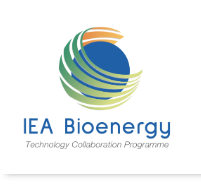
Biorefinery processes can have a main role in the energy transition to a 100% green industry. IEA Bioenergy Task 42 (biorefining in a circular economy) recently provided an updated version of its global interactive web-GIS portal “Biorefinery Atlas”, including localization,










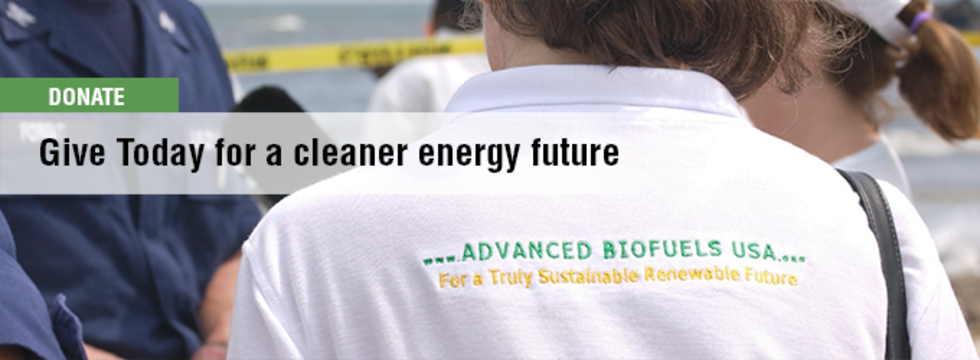



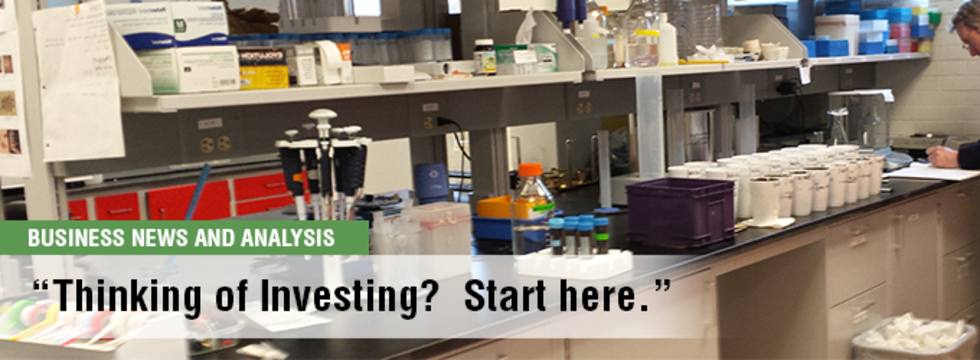




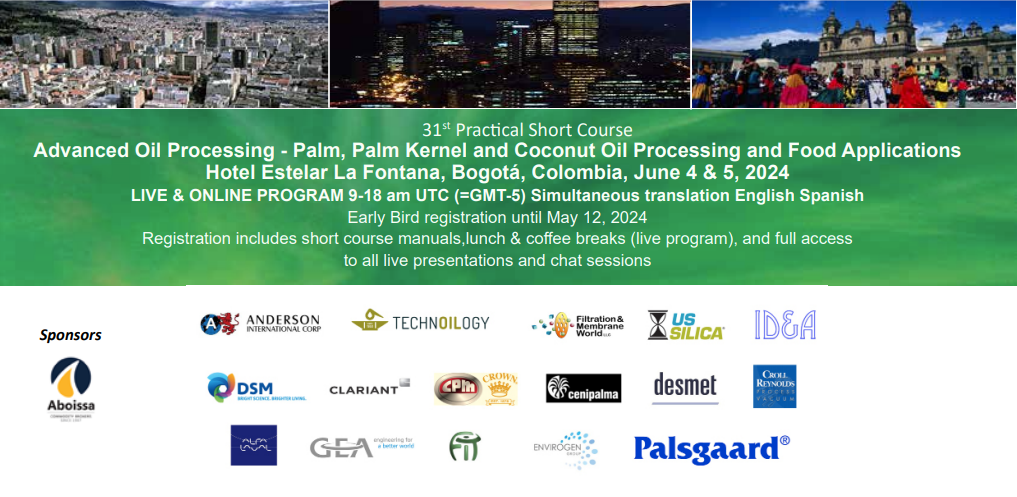

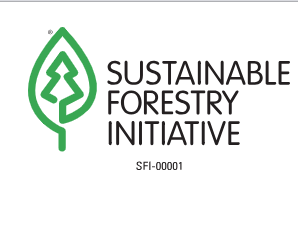








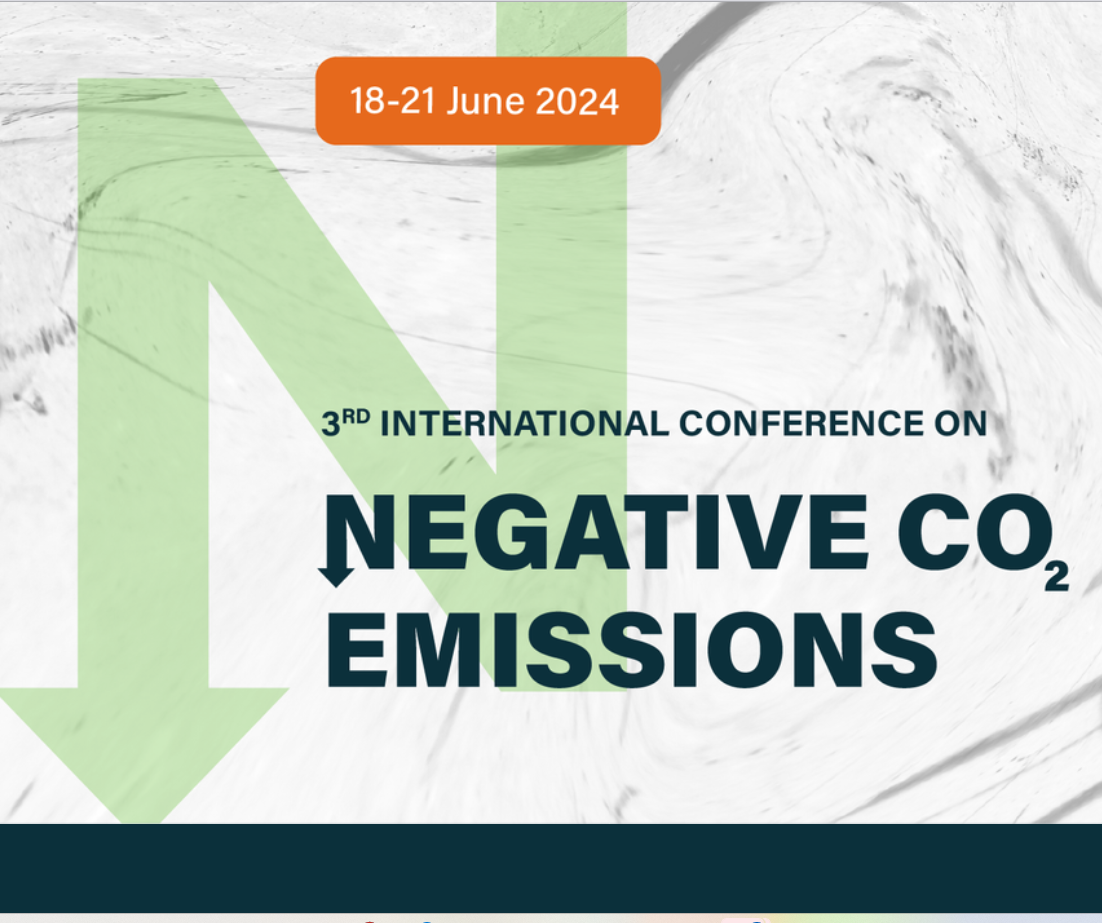

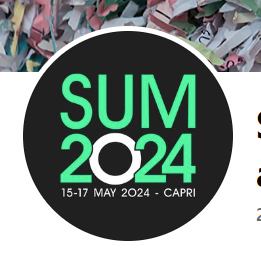

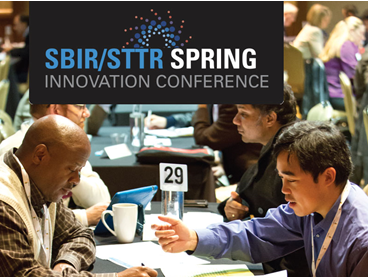


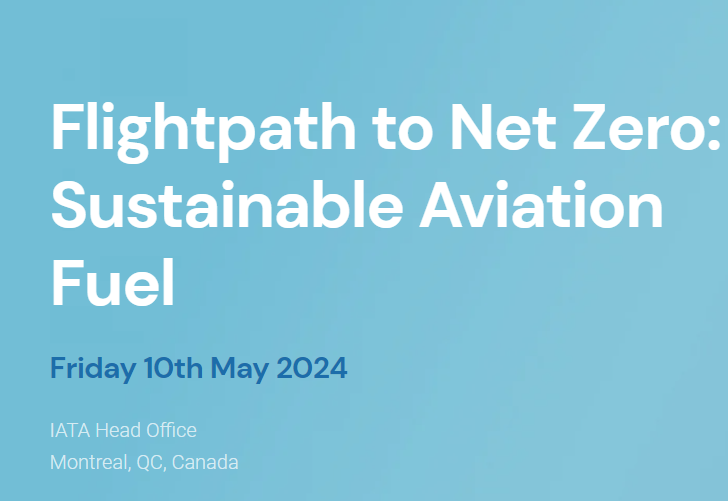














.jpg)







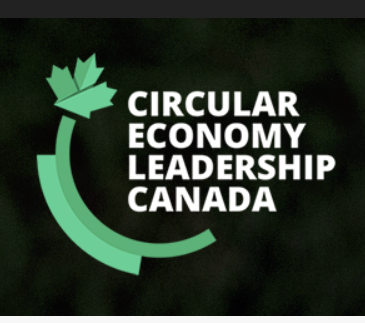


.jpg)




